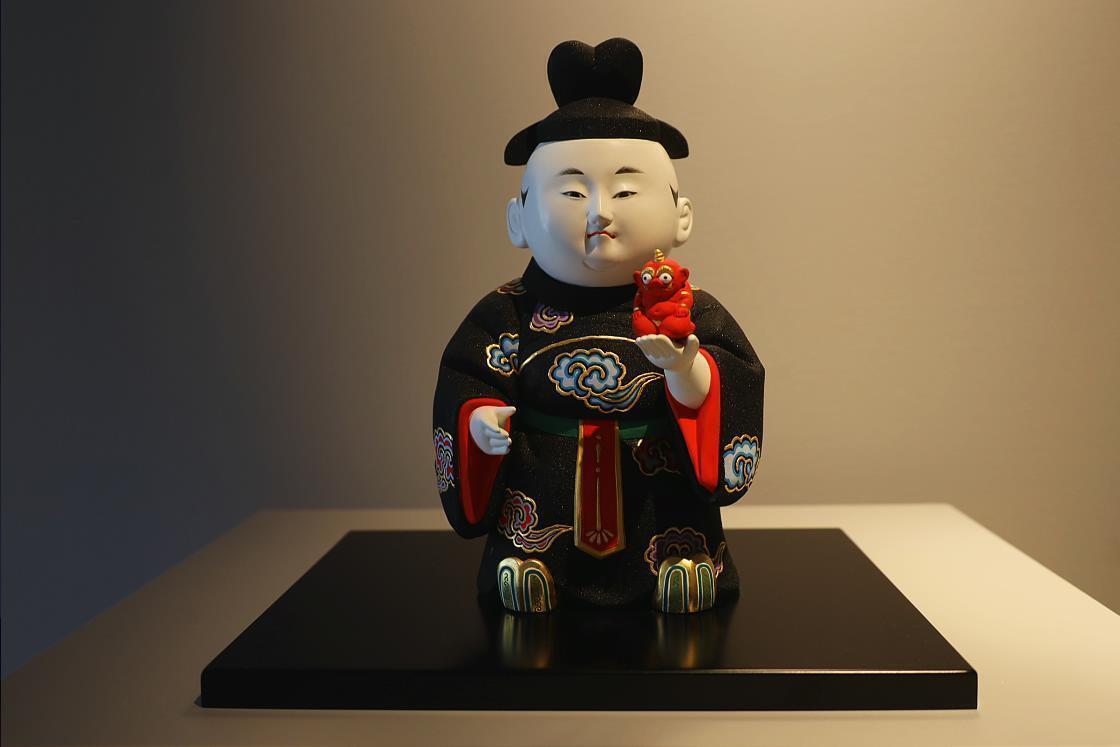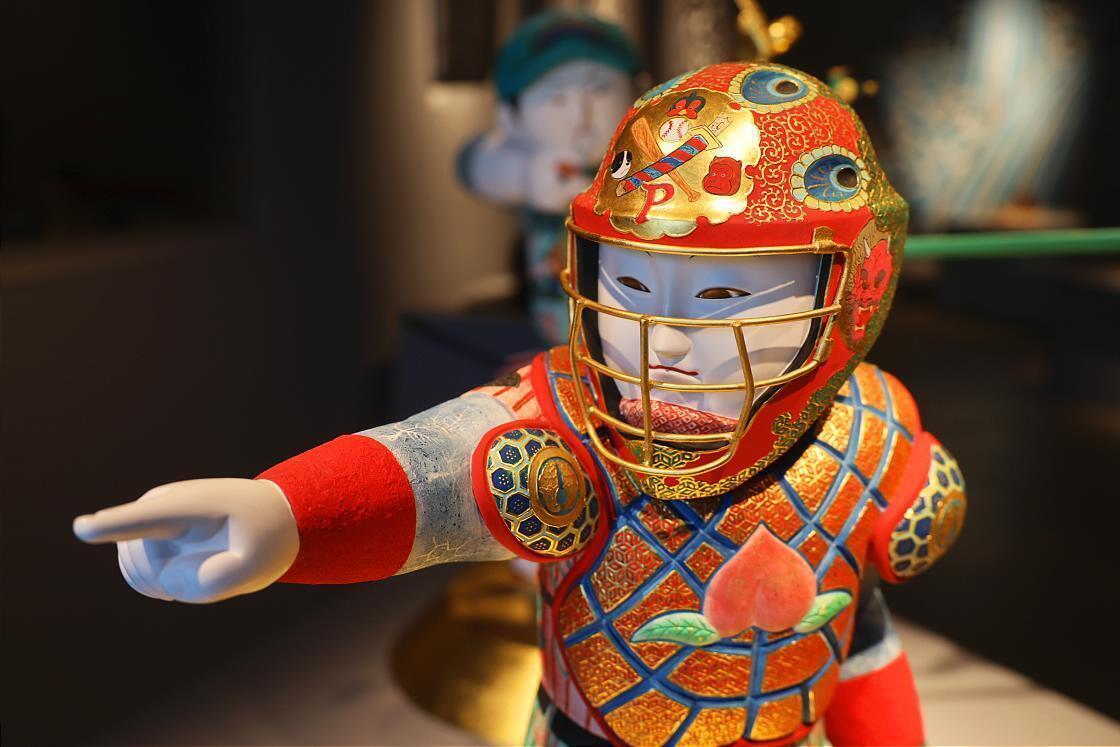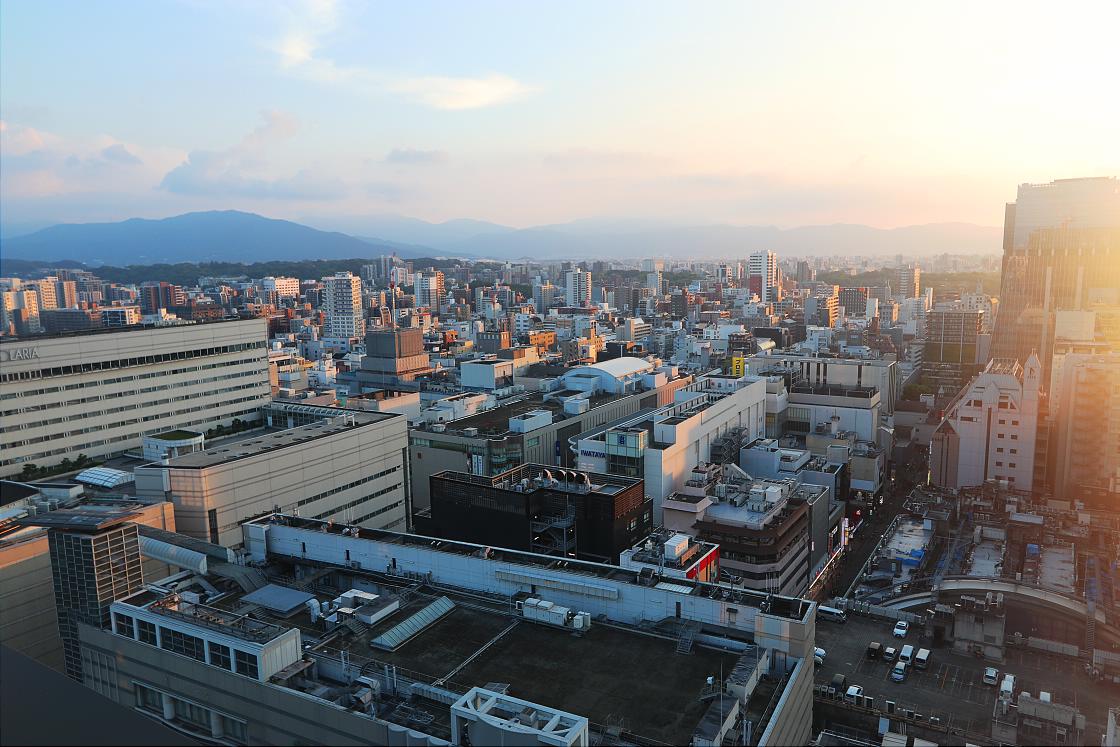Discovering Takamatsu and Fukuoka
Ever since large-scale tourism to Japan began, visitors have naturally gravitated to a handful of major destinations like Tokyo, Kyoto and Hakone, eager for their own version of the classic Japan experience. It's a relatively easy, low-risk approach that makes it easy to tick off iconic spots, but with a wealth of information at our fingertips and the country's incredible transport network offering easier and more universal access than ever before, there's never been a better time to widen your travel horizons.
As part of our ongoing partnership with the Golden Route to West Japan project - helping to popularize a wealth of alternative destinations in Japan's western half while easing some of the pressure on overcrowded hotspots - I recently had the chance to embark on a three day trip from Osaka to Takamatsu and Fukuoka, two vibrant and culturally rich cities, and gateways into the major islands of Shikoku and Kyushu respectively.
Along the way, I was able to take in an exciting mix of traditional and contemporary attractions, a reminder that authentic and meaningful encounters with Japanese culture are not something confined to just a few places, and hinting at the many possibilities that lie outside the usual tourist trail. I also found time to drop by the hugely popular Expo 2025, where the Golden Route to West Japan initiative unveiled a detailed and wide-ranging set of travel itineraries to help prospective travelers plan their trips.
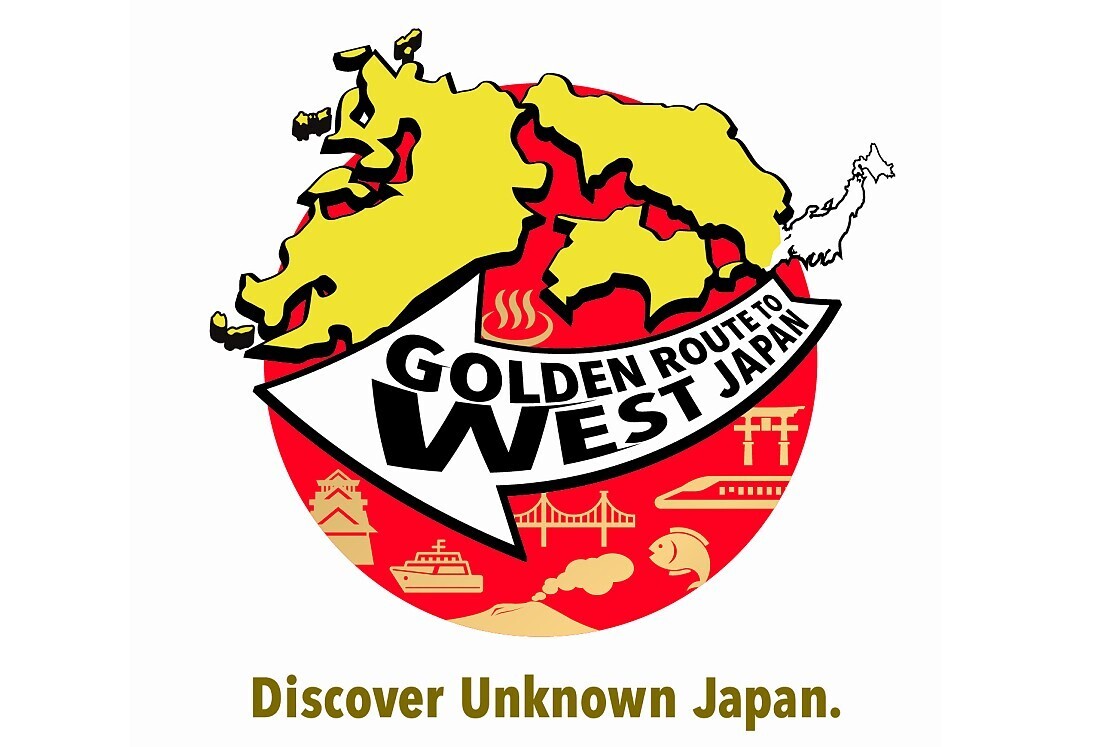
Day 1
Right now it's hard to miss the Osaka Expo - a major event shining an international spotlight on Japan that has already welcomed over 20 million visitors since opening in April. Built around a theme of "designing future society for our lives", the Expo provides a forum for nations and industry leaders alike to promote their own vision for a sustainable future through talks, demonstrations and exhibitions held in a series of unique and eye-catching pavilions.
Arriving on day one for my second visit to the site, I was once again struck by the towering lattice structure of the Grand Ring - about two kilometers in circumference - enclosing the Expo's main central area and allowing for a spectacular bird's eye view.
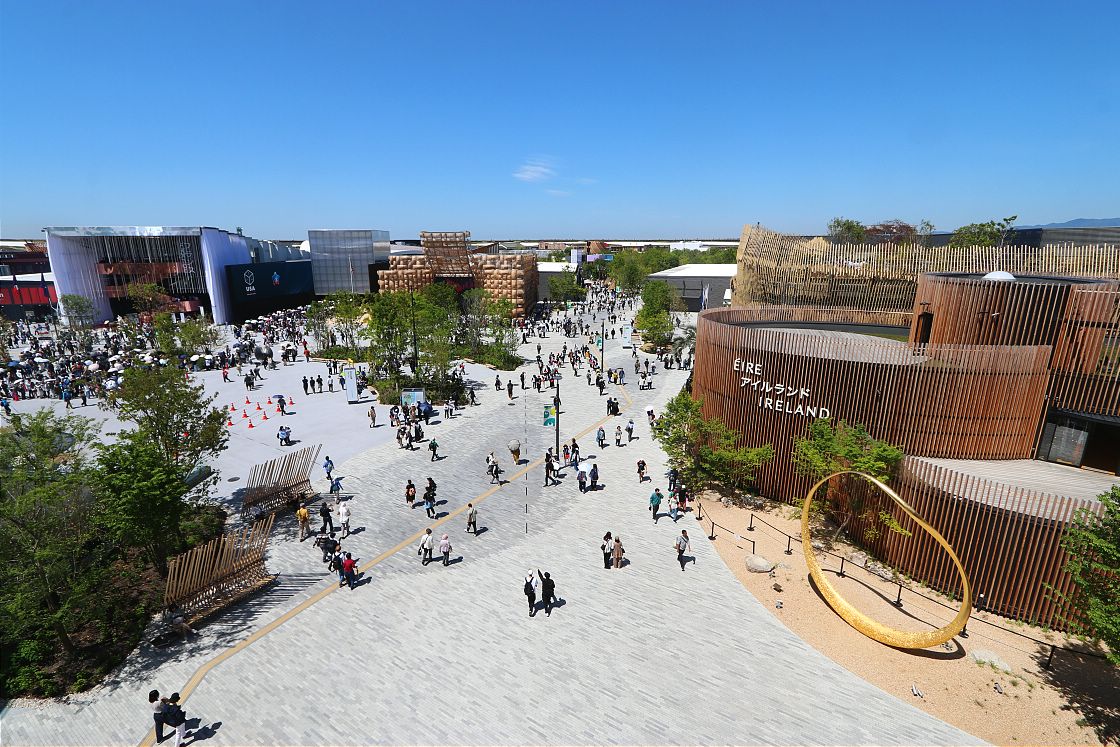
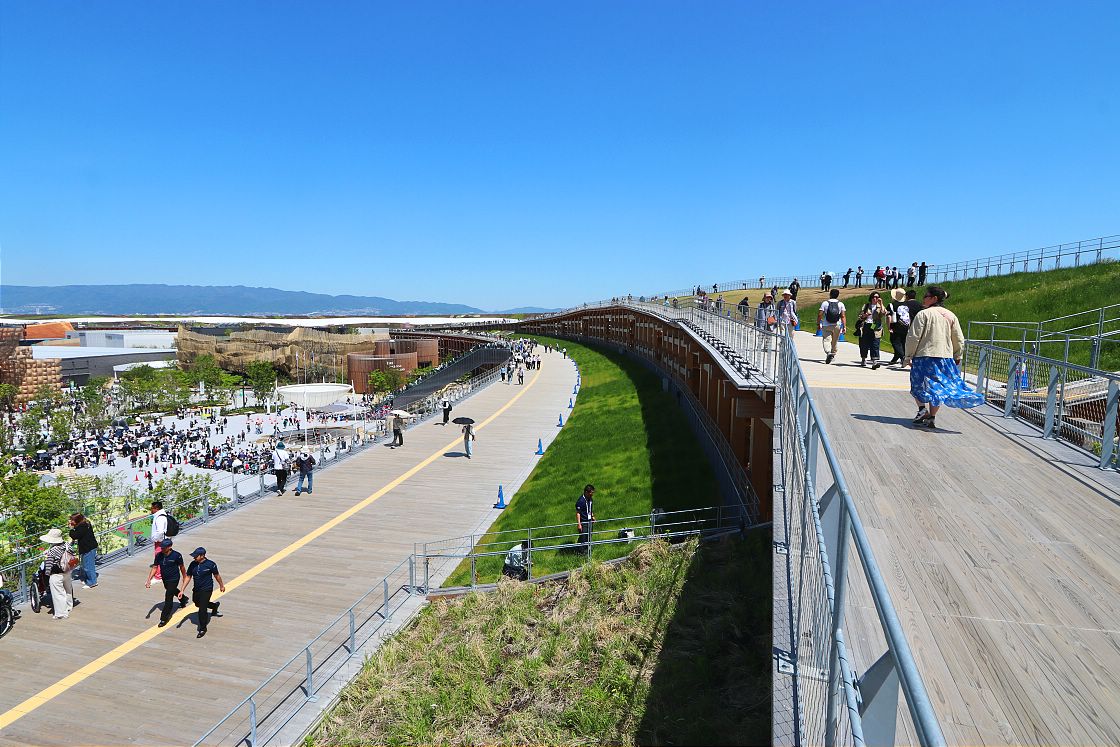
With just a few minutes to spare, I set off on a quick circuit of some of my favorite spots, beginning with a few of the most visually arresting pavilions. Some feature bold designs by world-famous architecture studios, like the Qatar Pavilion by Kuma Kengo & Associates (KKAA), in which a white, sail-like material covers a timber framed structure creating a sense of buoyancy and lightness.
Another outstanding piece, the Better Co-Being Pavilion created for the Expo's organizing body by SANAA foregoes a single exterior altogether in favor of an immersive, garden-like space with multiple art installations and a fine, latticework canopy. Sadly, without an appointment or time to wait in line, I could only gaze at them from outside.
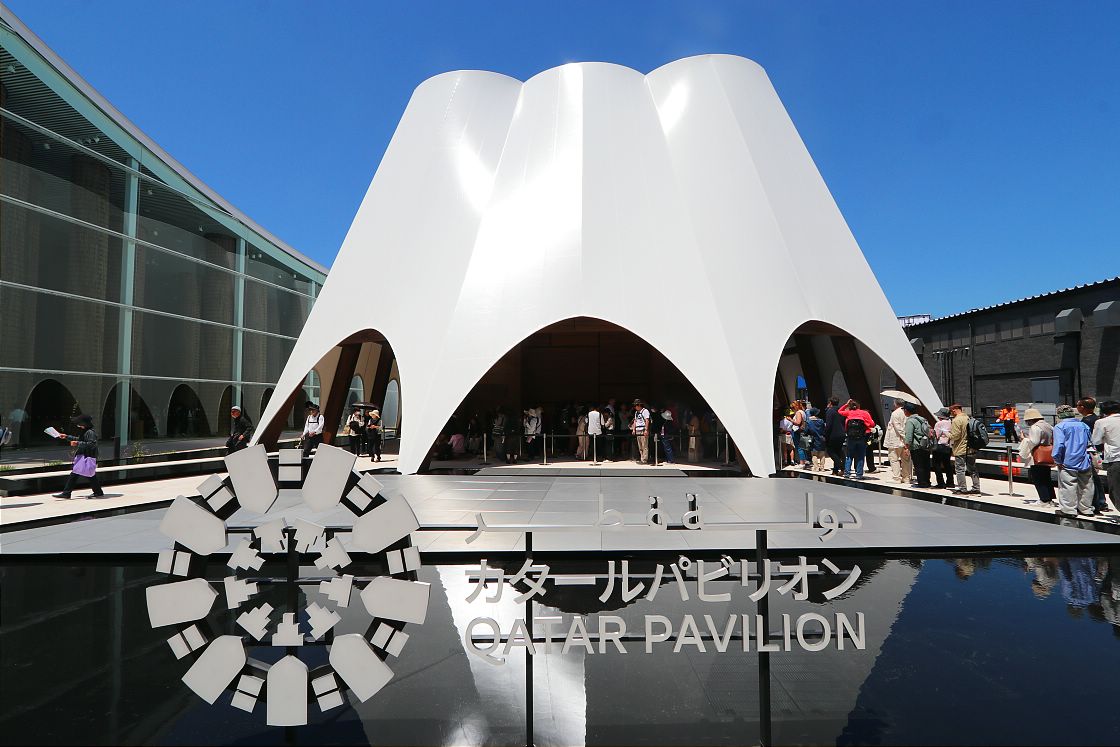
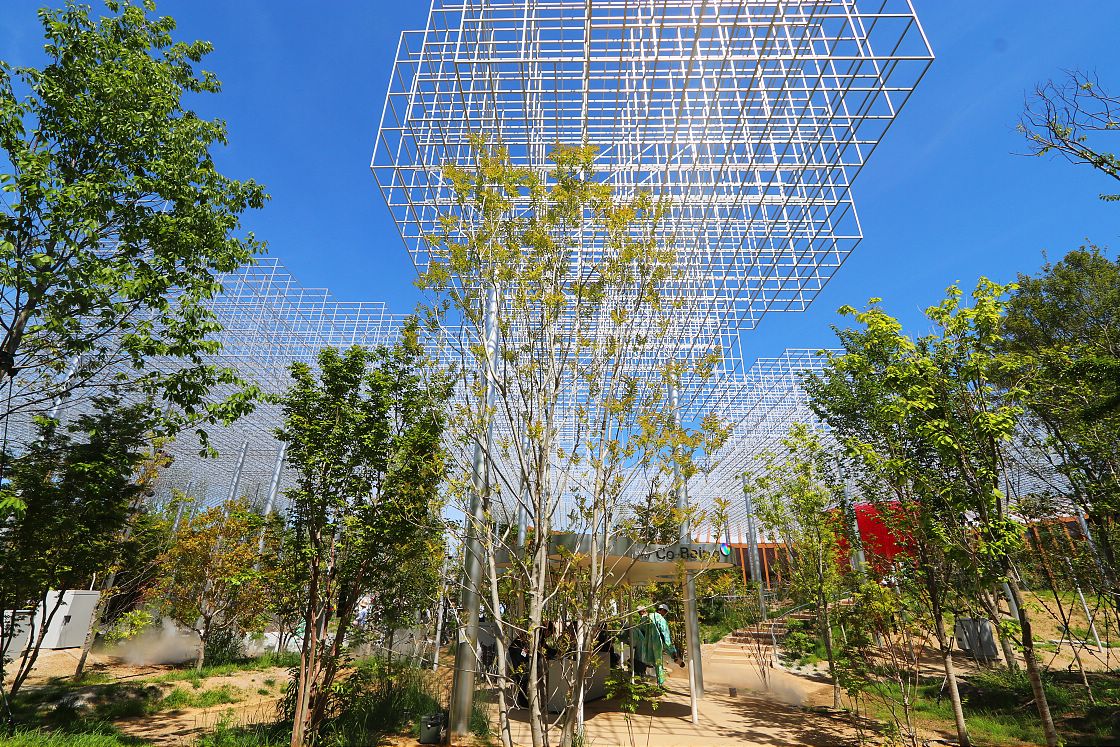
In fact, some of the most enchanting spots within the Expo grounds are not connected to any pavilions but are simply beautiful spaces to explore or take a break in. In the course of my short walk, I noticed a few such areas where just a couple of light touches - a little shaped concrete here, a dome or mesh canopy there - transformed into something bold and imaginative.
Best of all, not least for providing a moment's respite from the late summer heat, was the Forest of Tranquility - a leafy oasis at the center of the Expo with strolling paths converging on a wooded, circular pond. Here, the undergrowth had risen a bit since my last visit, adding to my amazement that the whole area had been created from scratch just a year ago.
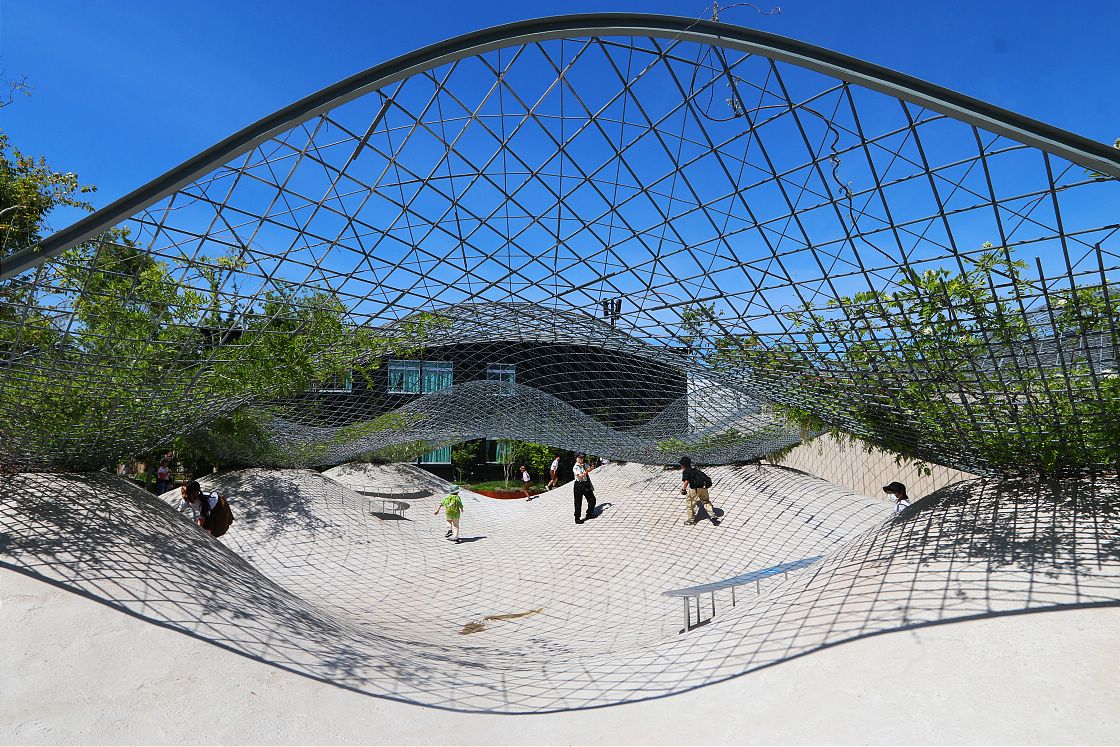
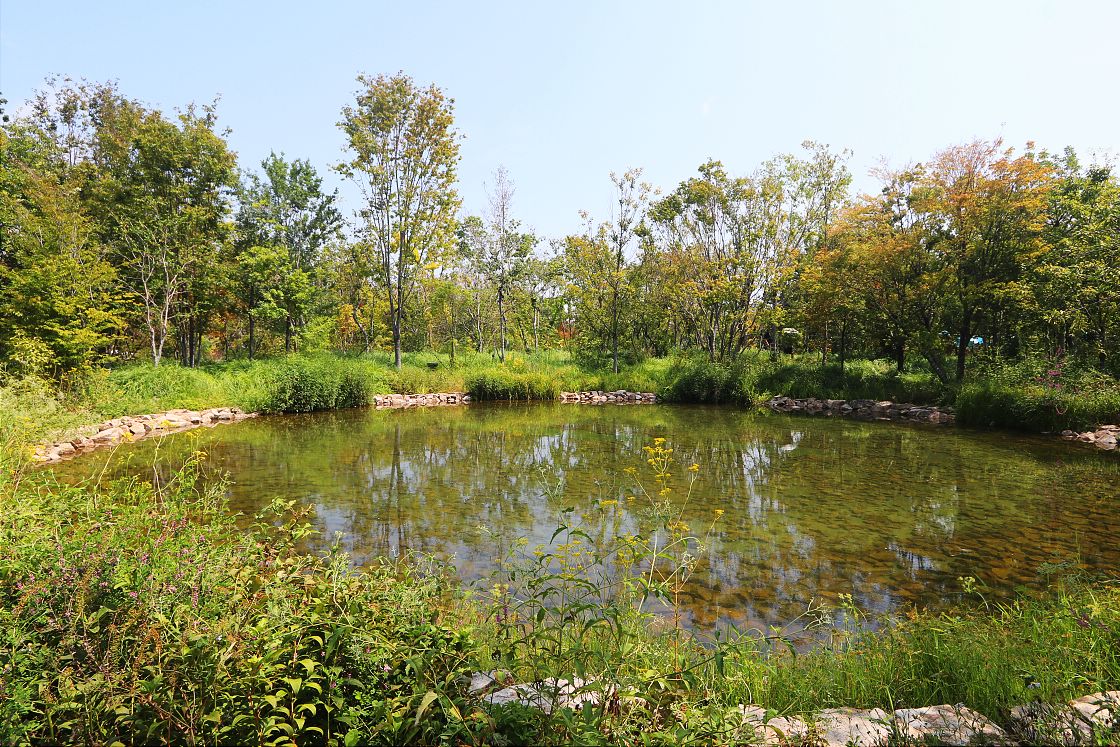
Soon, it was time to make my way to the Expo's WASSE exhibition center for a special promotion by the Golden Route to West Japan initiative. Kicking off with a brief conference by the mayors of each participating local government, the event provided information about a wide range of destinations in West Japan through manned stalls and displays packed with photos, maps and cultural nuggets.
Coming from a travel industry background, I was impressed both by their appeal and the inclusion of so many practical details, showing exactly how to connect the dots through a series of example itineraries, each one broken up logically and structured around a single theme, like "the natural beauty of the Seto Inland Sea" or "roots of the samurai". For readers planning their own adventure in West Japan, you can find each of the itineraries on the official website.
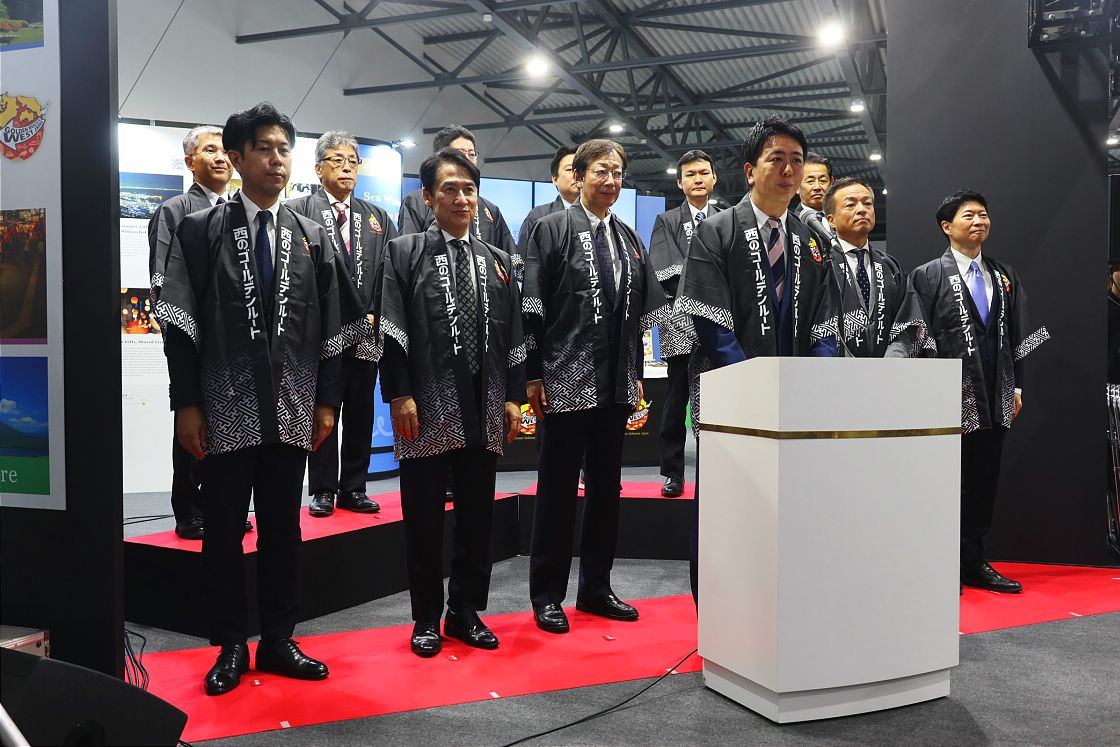
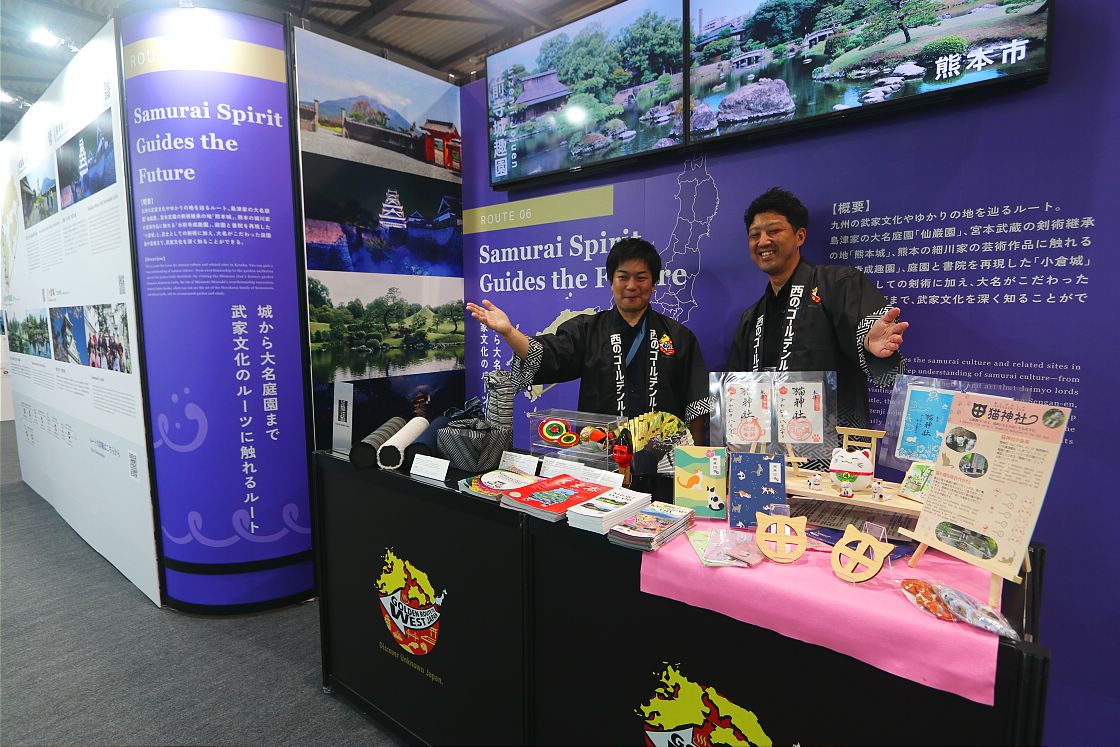
After checking out the exhibition, it was time to set off for the next part of my trip. Jumping in a taxi to Shin-Osaka Station, I took a Sanyo Shinkansen to Okayama then changed for the Rapid Marine Liner to Takamatsu, a journey of just under three hours.
Facing out into the Seto Inland Sea from the north coast of Kagawa Prefecture, the medium-sized city of Takamatsu has served for centuries as the main gateway into Shikoku, historically by ferry but more often these days by train services crossing the 13-kilometer Seto Ohashi Bridge. Easy to explore with its compact, walkable center and relaxed atmosphere, the city also makes an ideal base to explore the islands dotting the Seto Inland Sea.
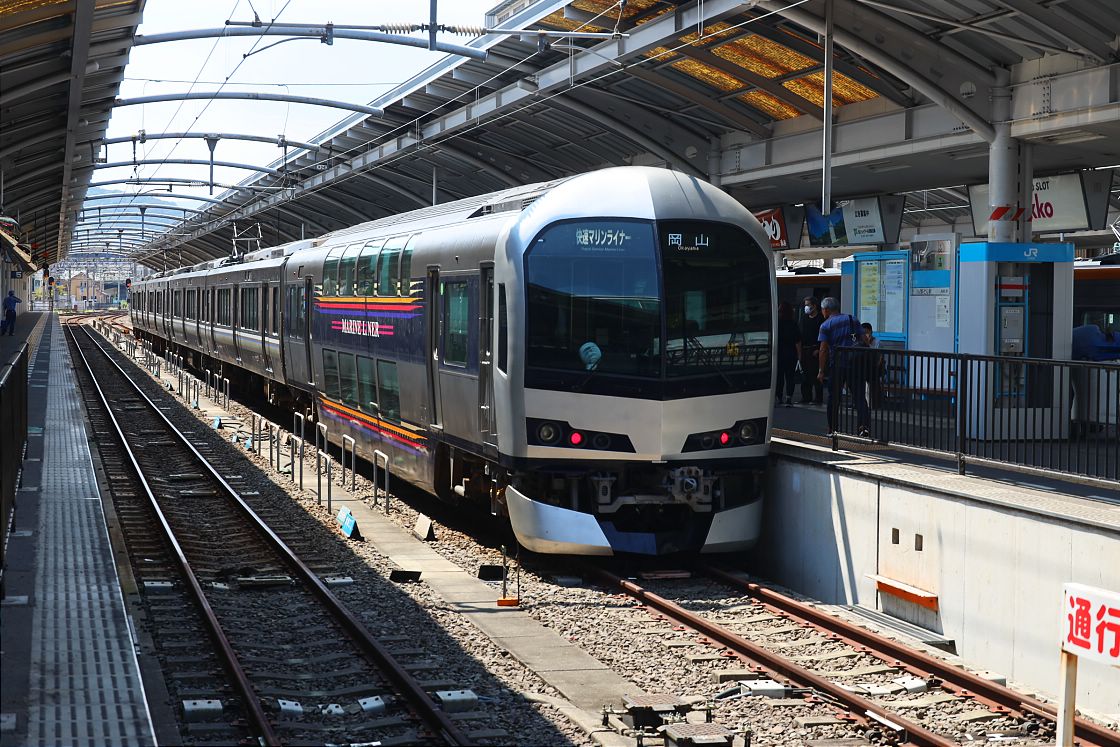
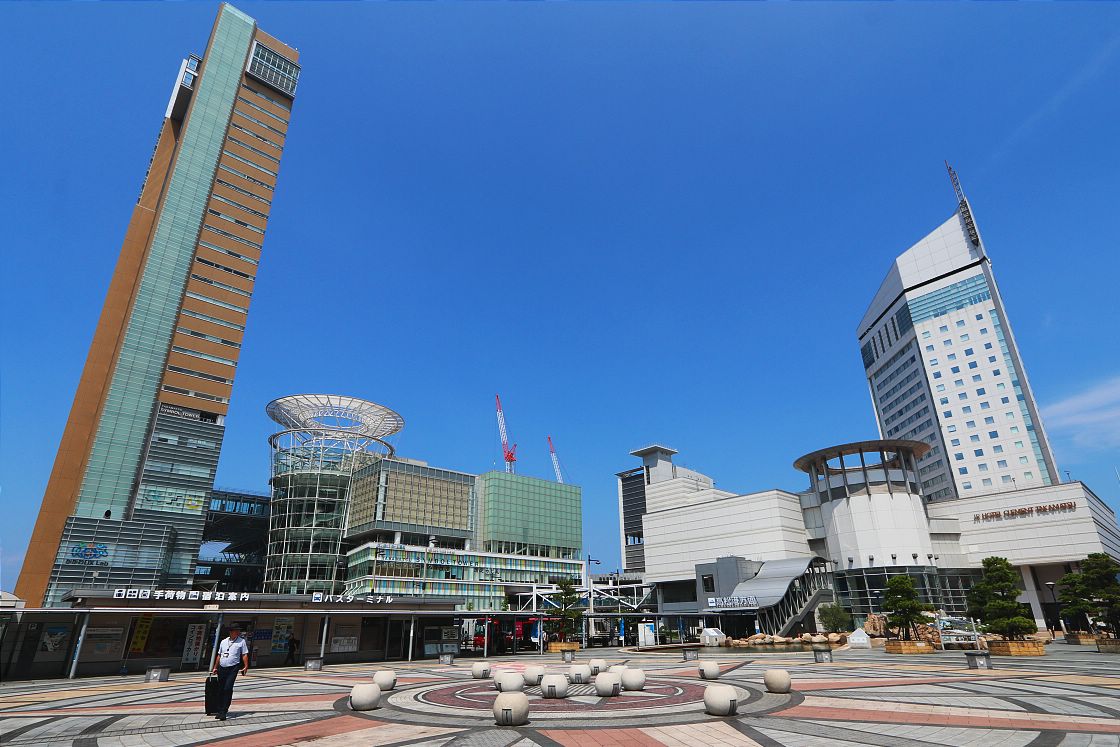
For many visitors to the city, its crown jewel is Ritsurin Garden, a sprawling traditional landscape garden widely considered to rank among the very best in Japan. Gradually expanded and refined over the course of a century by Takamatsu's former rulers, the Matsudaira, it was at last completed around 1745 as a strolling garden for the feudal lord and his inner circle.
Arriving from Takamatsu Station by a ten-minute taxi ride, I was immediately struck by the garden's epic sense of scale, further enhanced by its drawing in of neighboring Mount Shiun in a classic example of "borrowed scenery". Another defining feature is its many meticulously shaped black pine trees - over a thousand of them - some planted as long as 300 years ago.
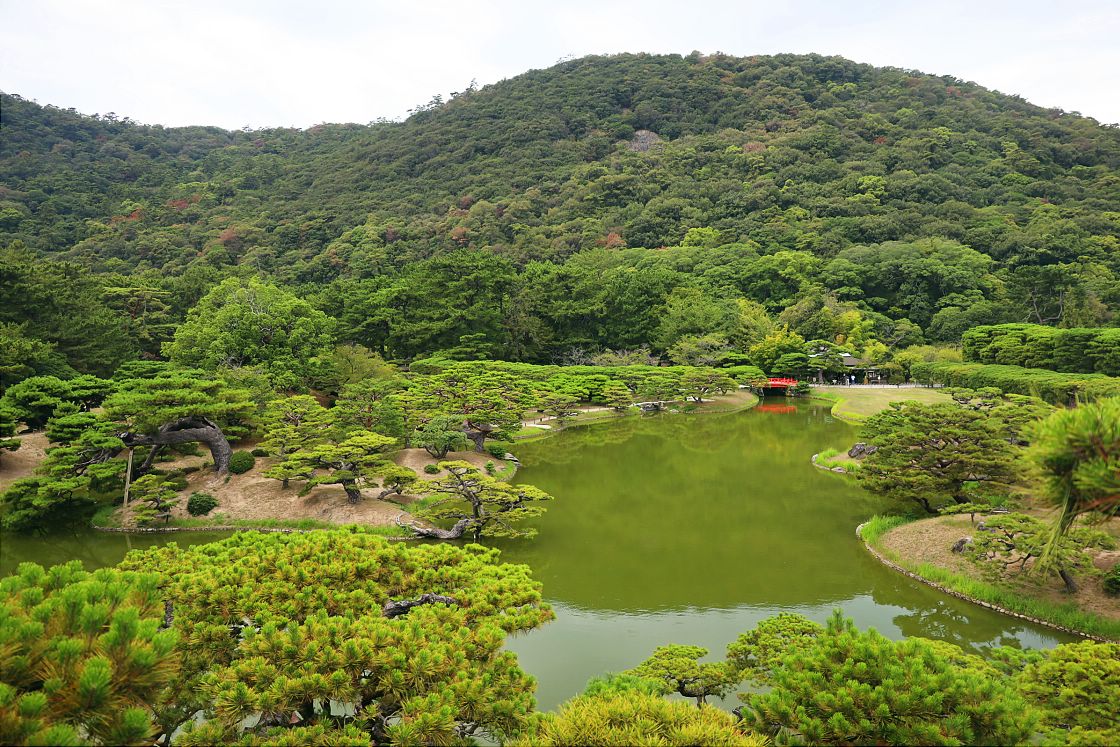
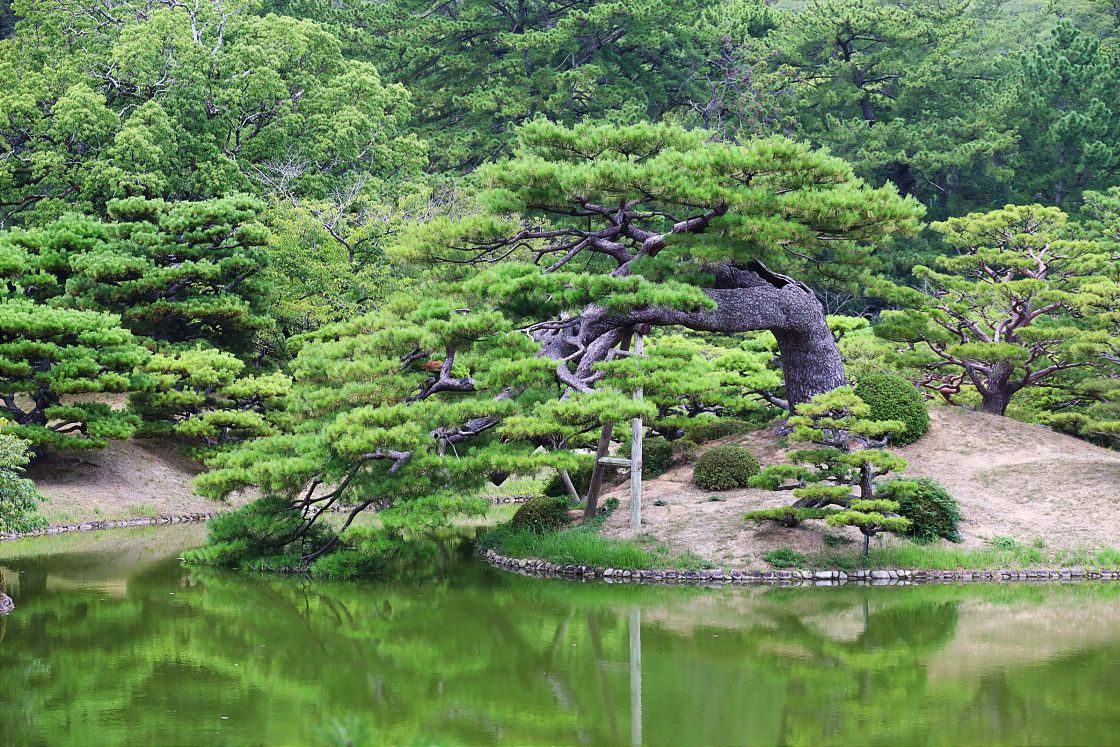
The garden features its share of landmarks and attractive viewpoints, but two spots in particular are especially celebrated today. The first, the Engetsukyo or "reclining moon" bridge, forms a graceful curve across the larger southern pond, casting an elegant reflection in the green-tinted water below.
The second, the Kikugetsutei or "moon scooping teahouse", dates to the early Edo Period and has kept its original, dignified character through numerous restorations. Today, visitors can pause here for a bowl of matcha and a traditional sweet while gazing out over the lake from its serene, tatami matted interior.
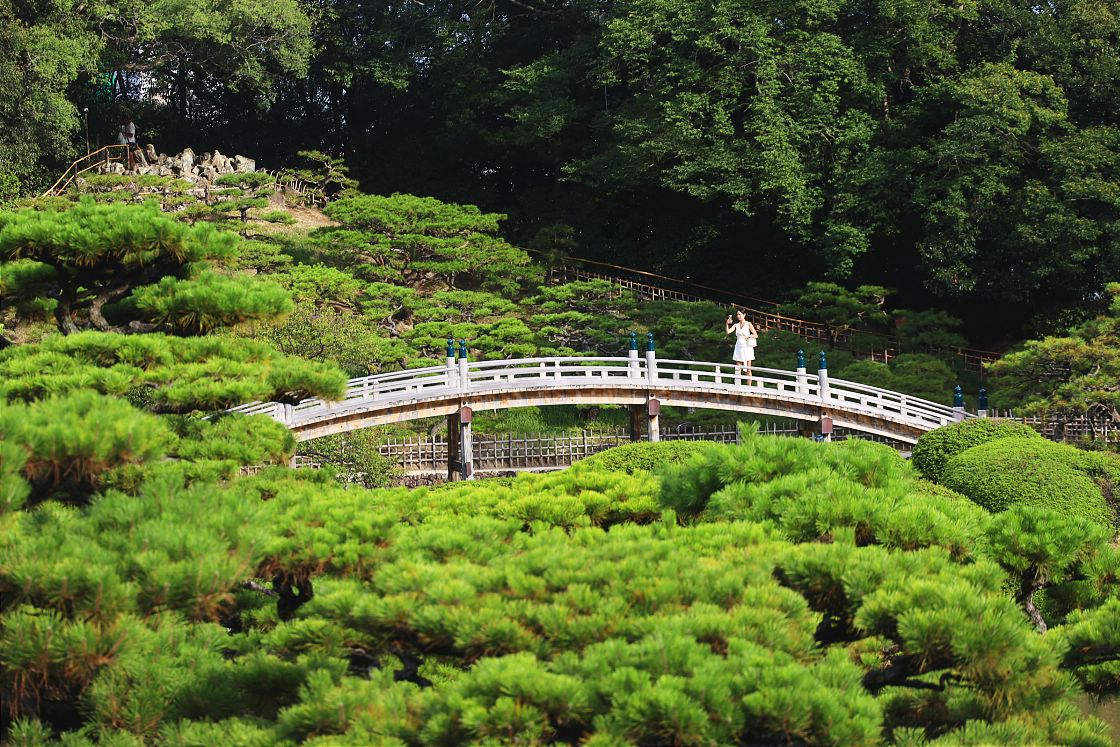
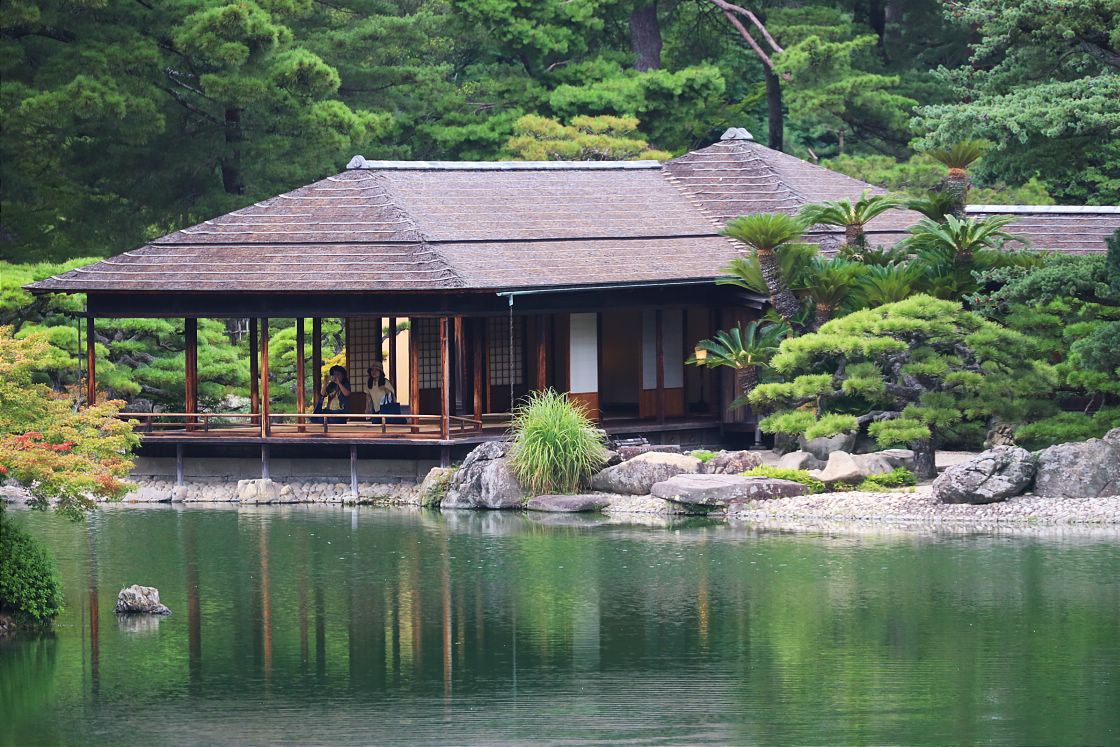
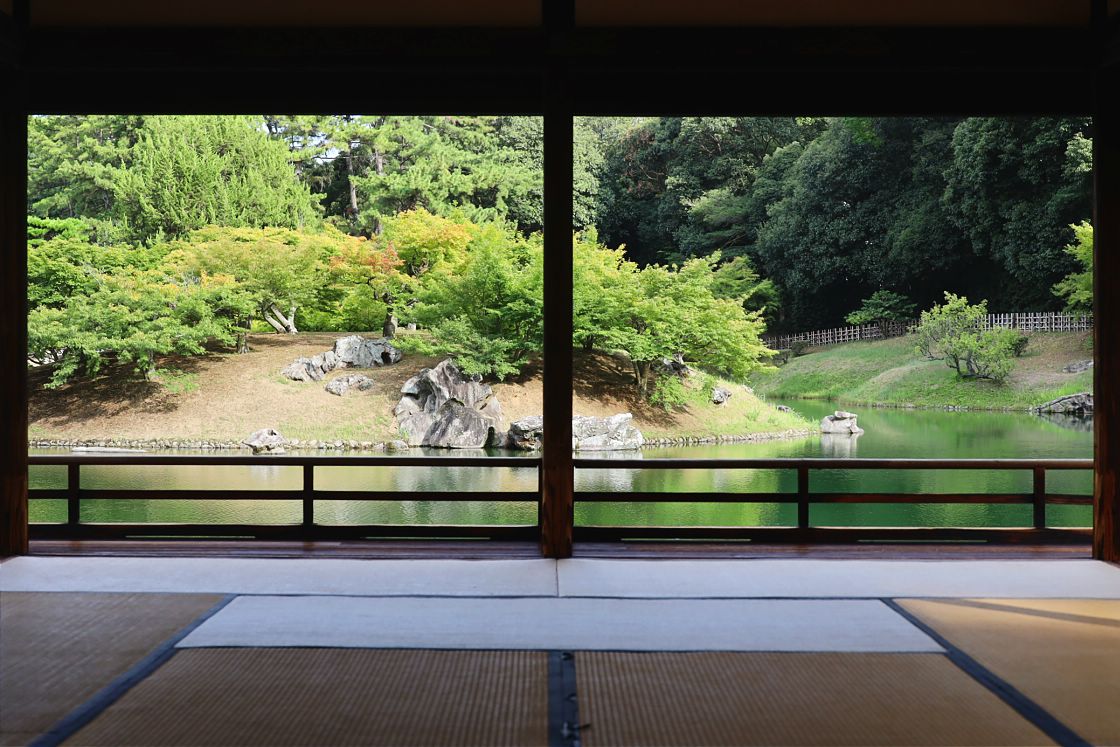
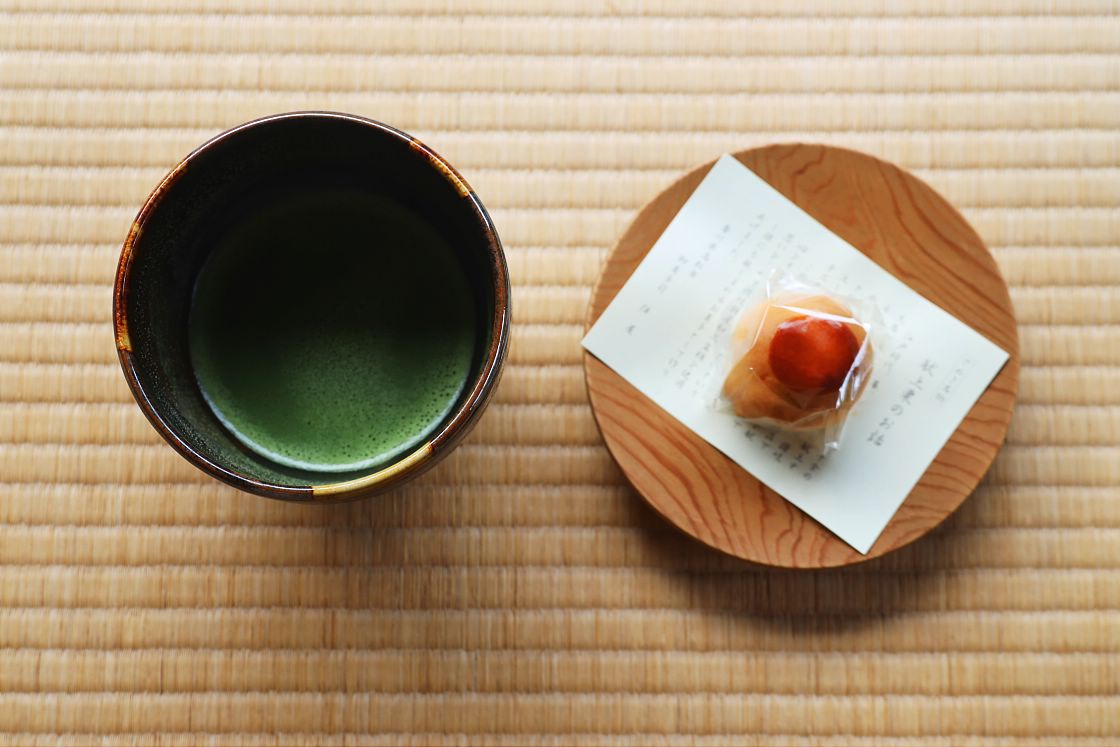
My accommodation for the evening was the JR Hotel Clement, a sleek, modern hotel in a prime location between the station building and ferry terminal. Generally accepted as the number one spot in Takamatsu (not least by Tripadvisor), it offers comfy rooms in a wide variety of types and comprehensive facilities, including a bakery, top floor bar and five different restaurants.
Out of these, I chose Steakhouse Shiki for my own dinner - an elegant, intimate teppan-yaki restaurant specializing in olive-fed beef from surrounding Kagawa Prefecture. Conceived back in 2006 as a way to use by-products from the island's olive oil production, the special diet was soon found to increase the beef's oleic acid content - enhancing marbling and tenderness, and making for a lighter and more umami-rich flavor overall.
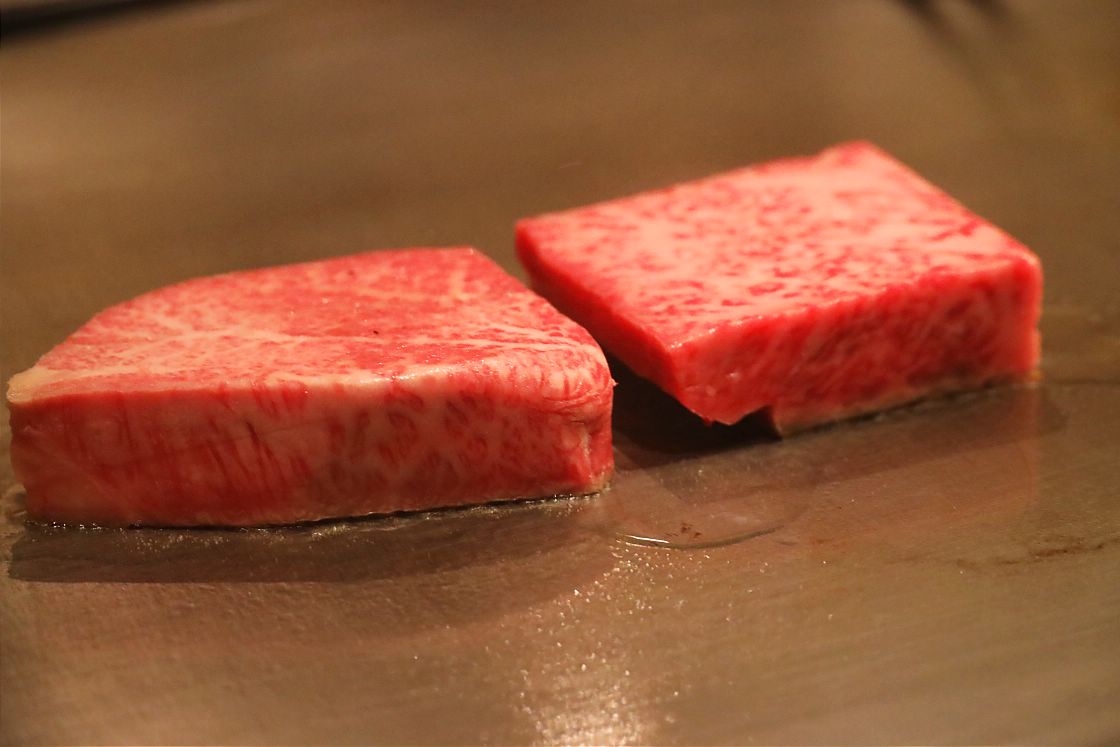
Taking a counter seat, I began my meal with a dish of light, palette-cleansing appetizers, then watched as Yamahata-san, my chef for the evening, began searing the meat with some light patter about its unique taste and benefits. In a final theatrical touch, he added a sprinkle of brandy, briefly igniting the hotplate in a flambé that sent flames leaping up towards the ceiling.
Having had different types of wagyu beef many times before, my expectations were certainly primed. What I wasn't prepared for was just how special it turned out to be - undoubtedly the tenderest meat I've ever tasted, with just a hint of olive oiliness to the flavor. One definite bonus was the chance to compare two different cuts of meat, with the fillet almost melting in the mouth while the sirloin was a touch firmer with a more robust, meatier taste.
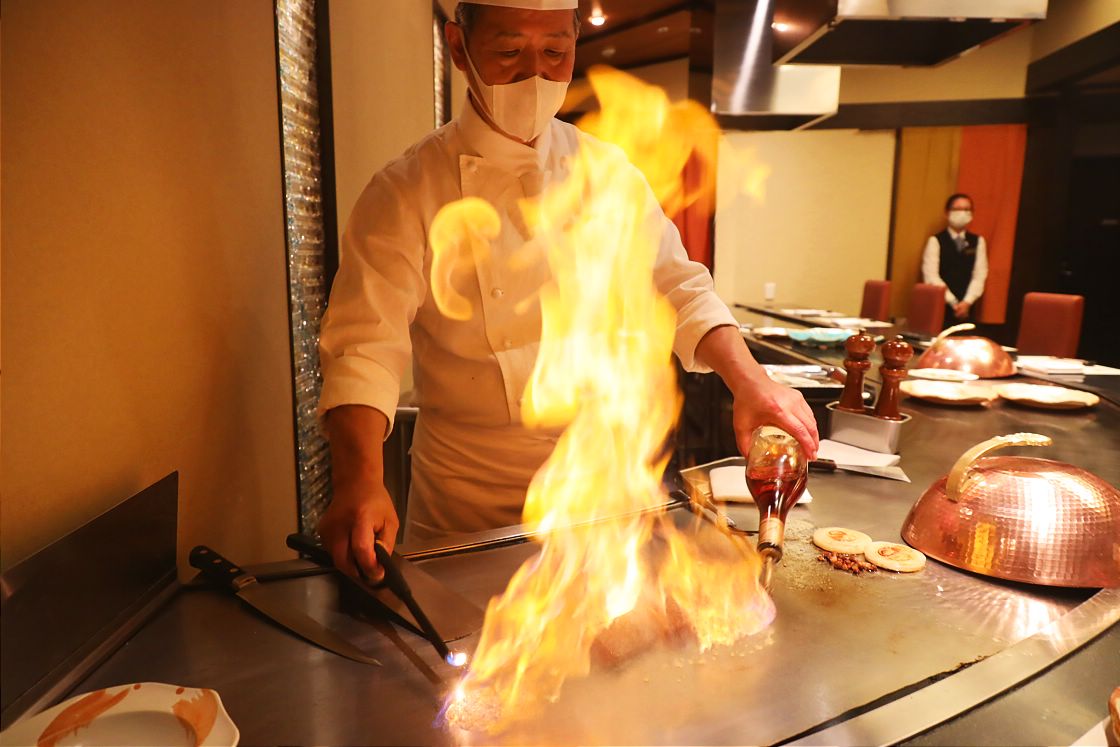
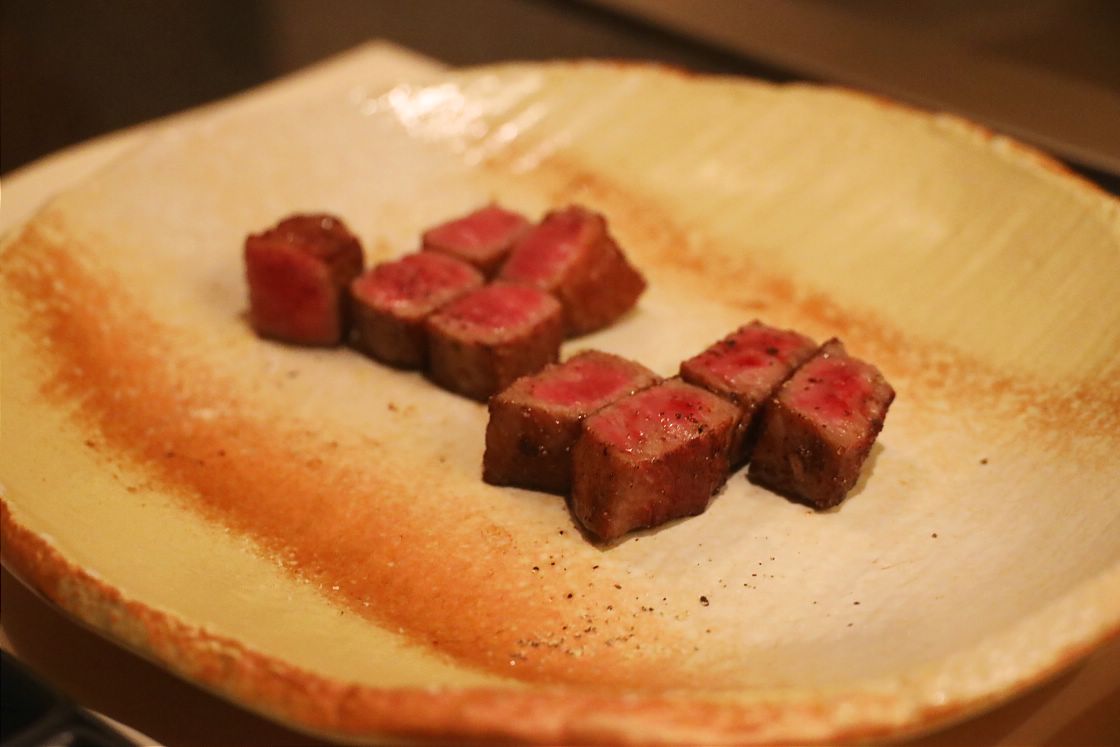
Day 2
After a beautiful meal and a comfortable night's sleep, I began the second day of my trip with a visit to the ruins of nearby Takamatsu Castle, located close to the seafront just across the street from the hotel. Also known as Tamamo or Seaweed Castle - a reference to an ancient poem hailing the surrounding coast as the "bay of jewelled seaweed" - the fortress was begun in 1588 under Takamatsu's then rulers, the Ikoma.
Intended to protect the vital shipping lane that passed through the Inland Sea from a rival clan on the opposite shore, the castle is a rare example of a "sea fortress" built to withstand attack from land or sea with a series of stone wall enclosures and moats flooded with seawater.
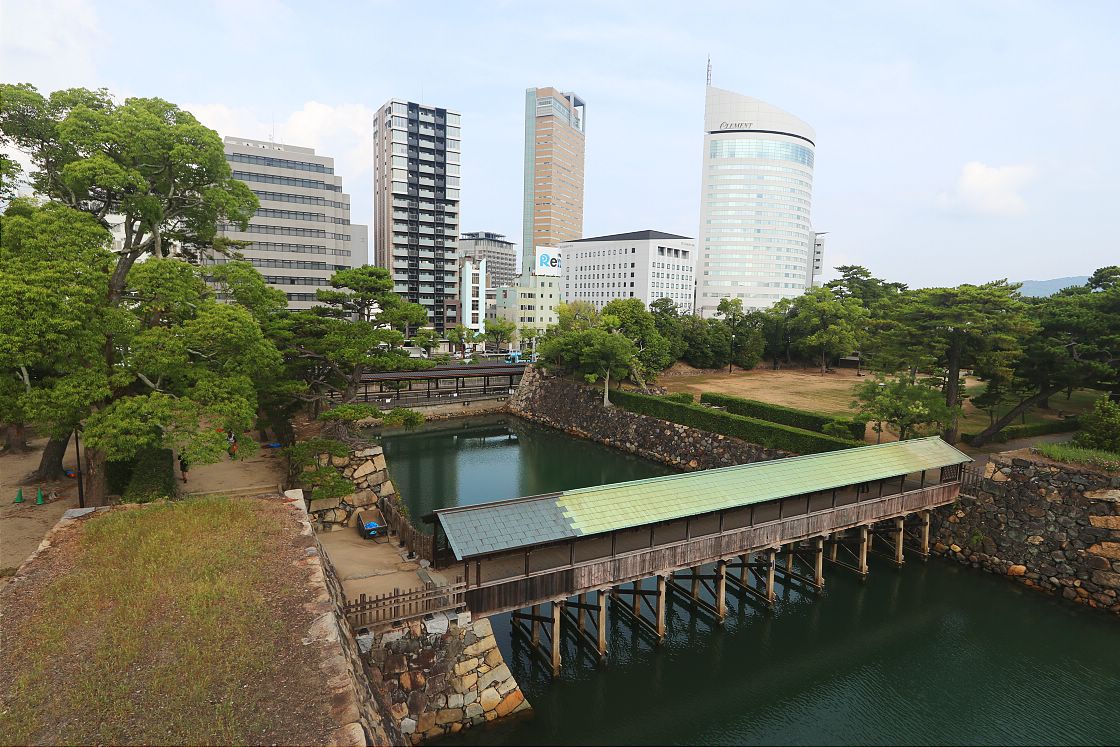
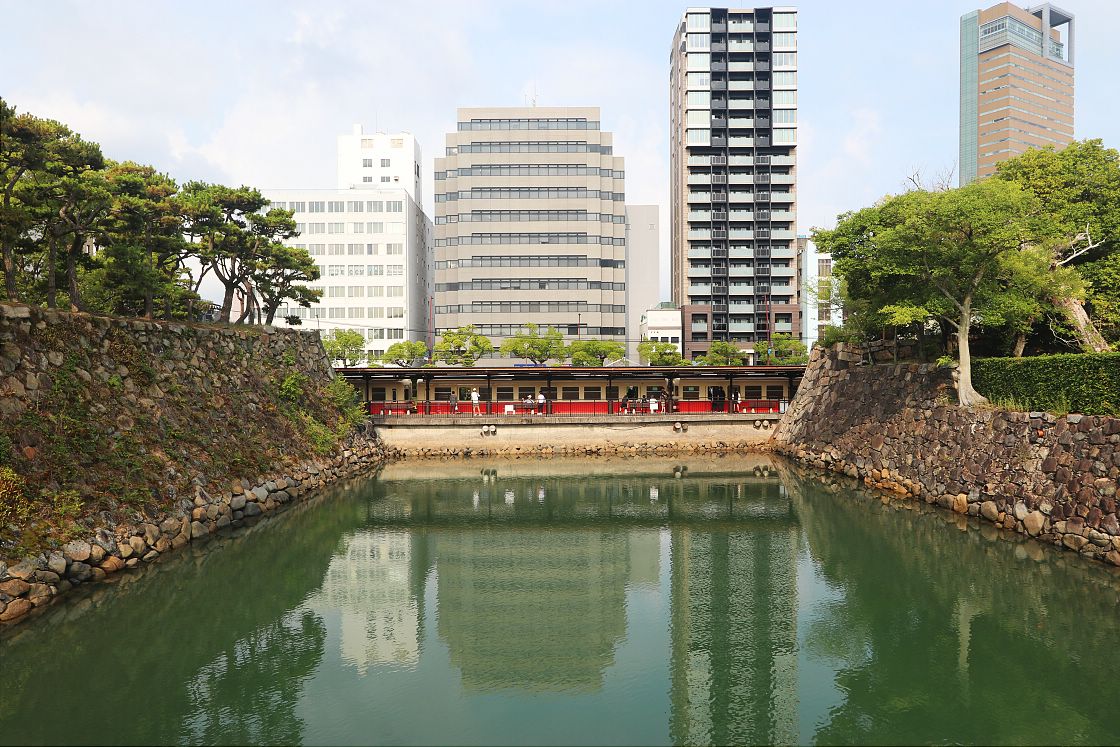
While the castle's main tower has long since been demolished, visitors to the castle and its surrounding park can still take in the impressive inner moats and defensive walls, most of which are original. Also surviving from the Edo Period are two turrets or yagura, the Tsukimi or moon viewing yagura, and the Ushitora or northeast tower - the latter rendered incongruous by its relocation in modern times to the southwest.
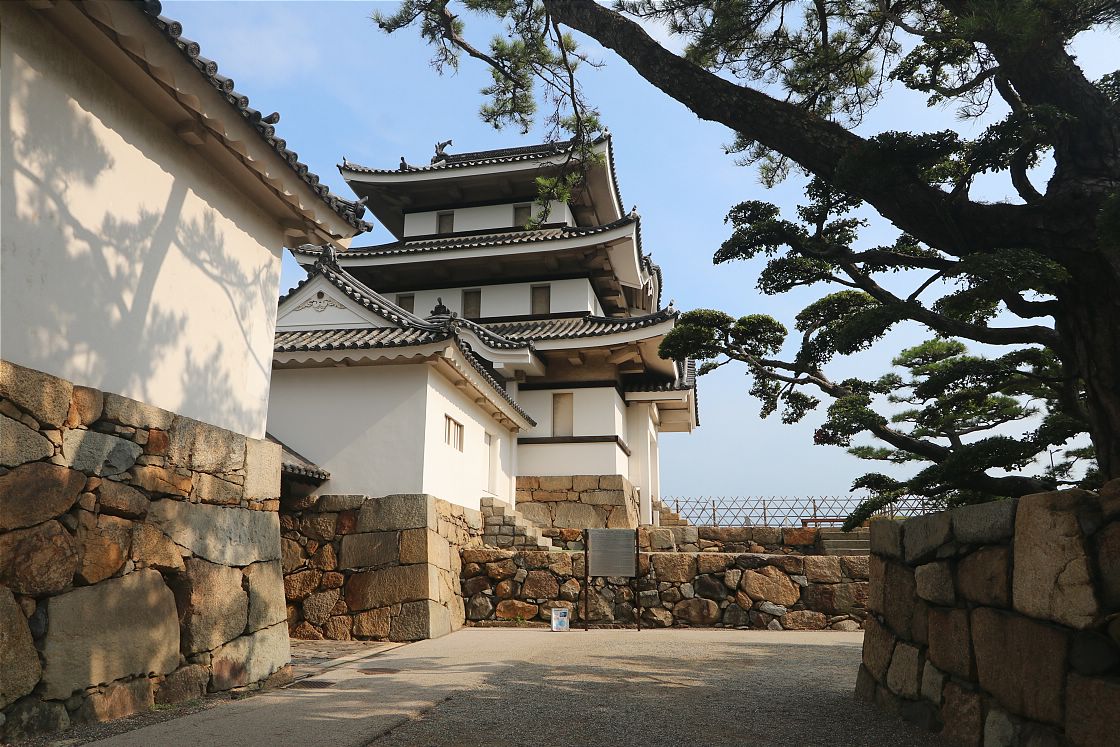
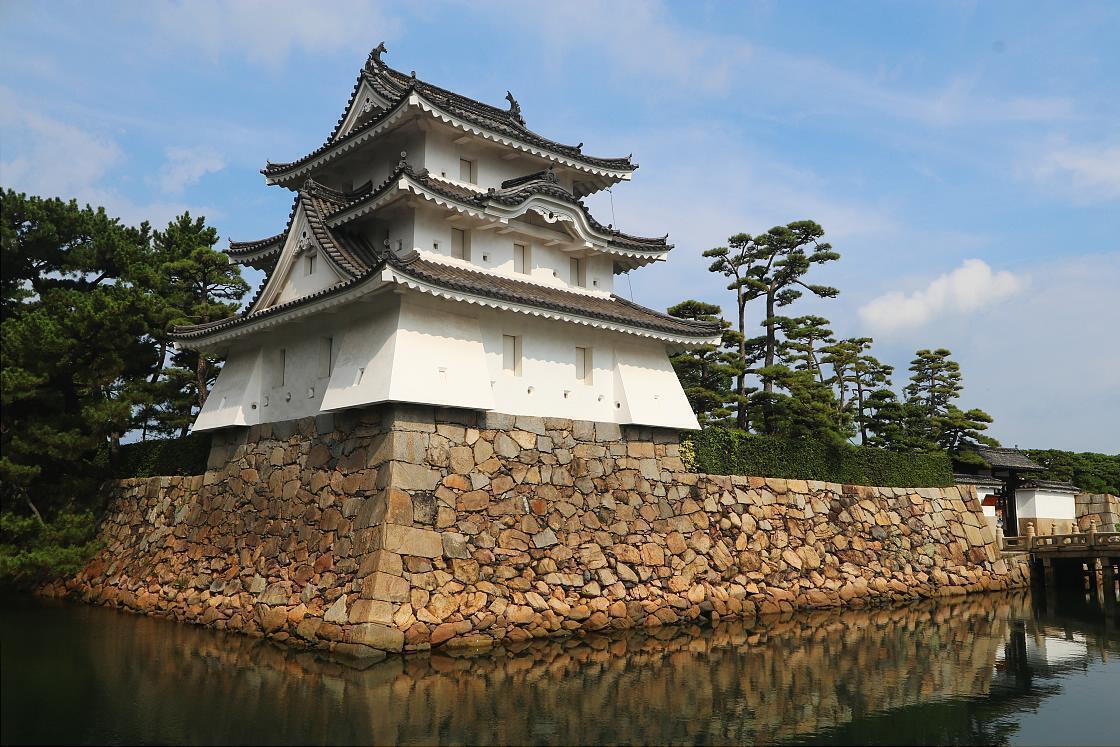
Also well worth a look are two elegant modern reconstructions - a half-size replica of the lord's residence or Hiunkaku, and a beautiful recreation of the Sakuragomon Gate completed in 2005. Leading directly to the lord's residence, this would have been the grandest of the castle's multiple entrances.
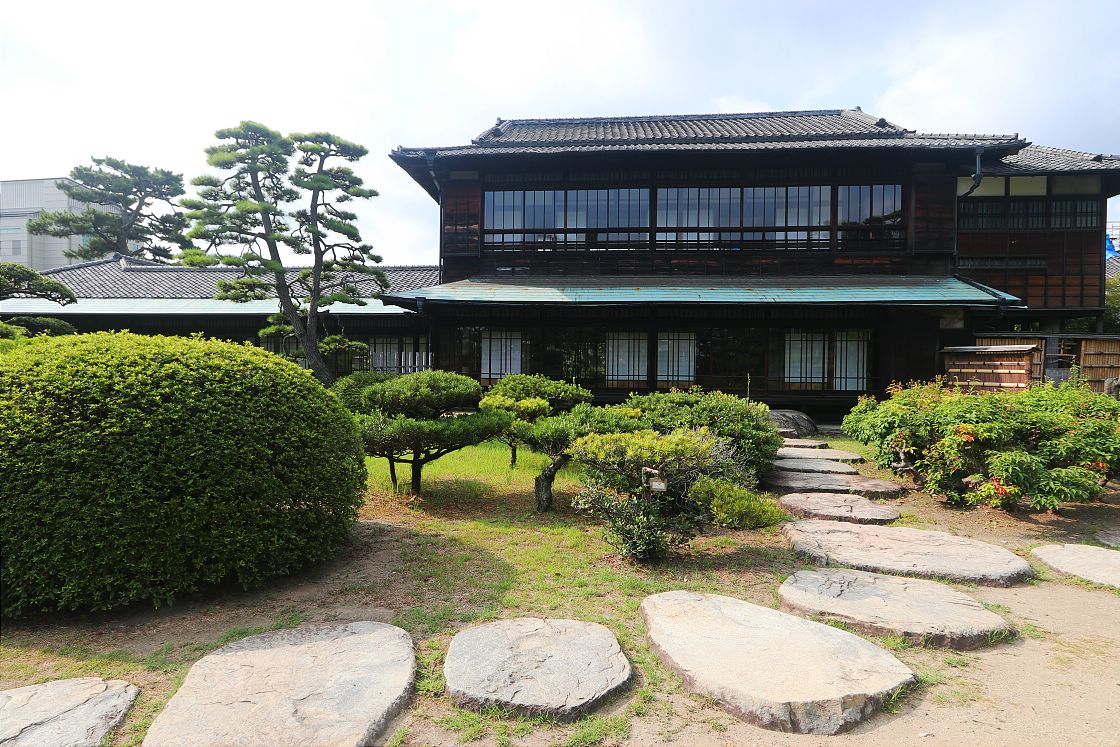
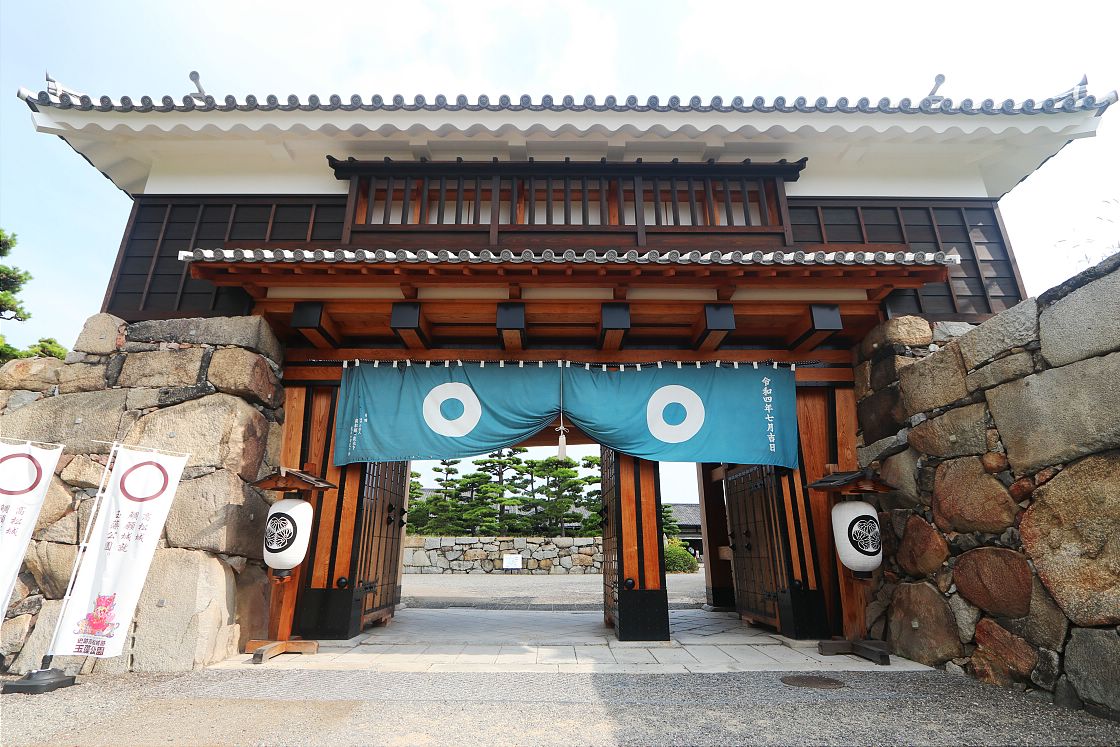
Leaving the castle behind, I jumped in another taxi for a 15-minute drive due west to the Shikokumura Museum - a sprawling open-air space located at the foot of Mount Yashima. Dotted around the grounds are over 30 traditional buildings gathered from all four of Shikoku's prefectures, dating from the Edo to Taisho periods and ranging from farmhouses and workshops to a single western-style lighthouse.
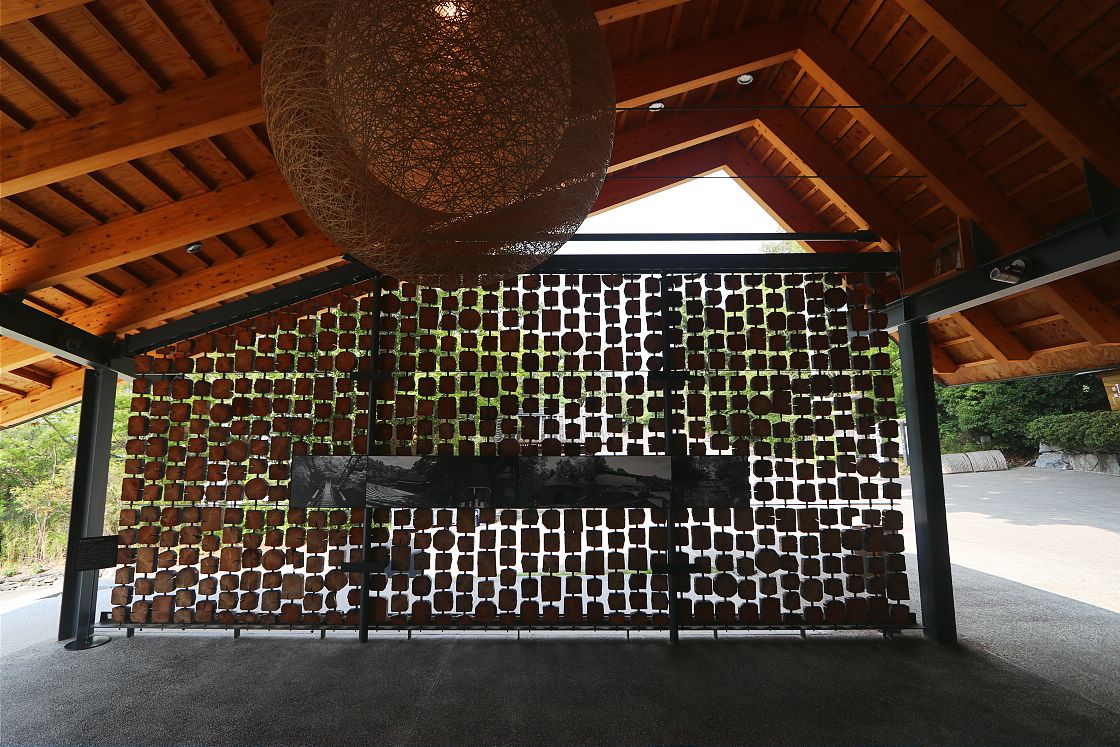
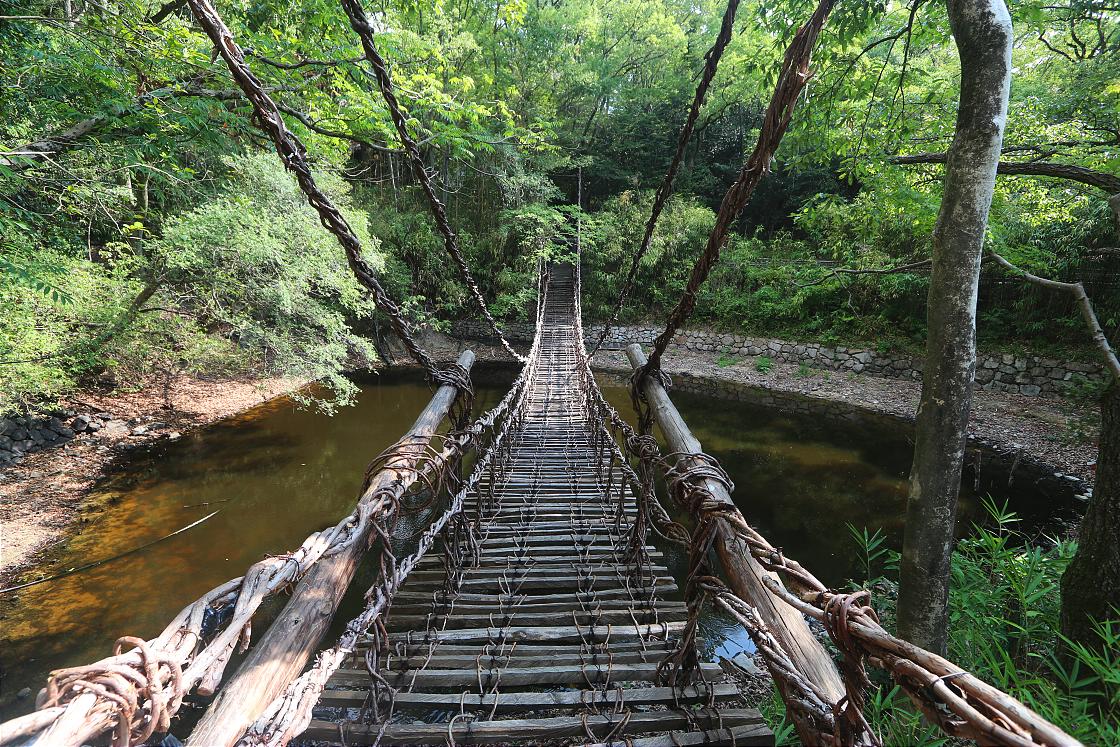
The buildings themselves have been lovingly maintained, sometimes revealing fascinating glimpses into how they were constructed and used. Inside two I found video displays in English and Japanese offering additional insights into rural village life and adding greatly to the sense of immersion.
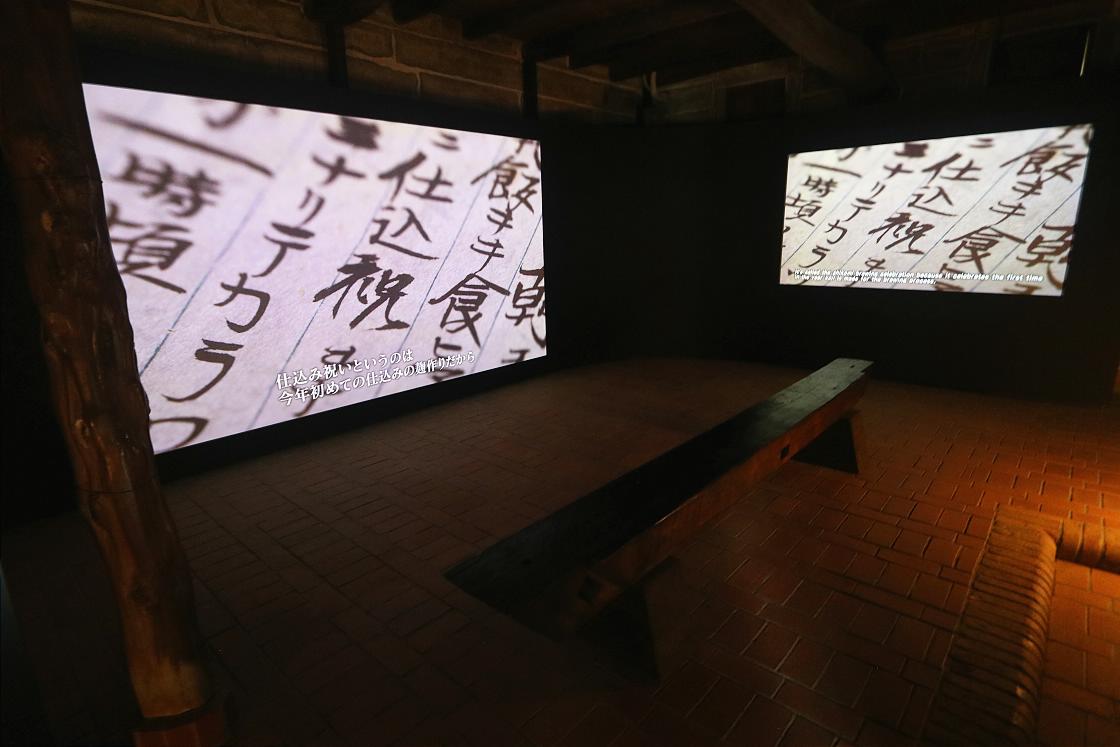
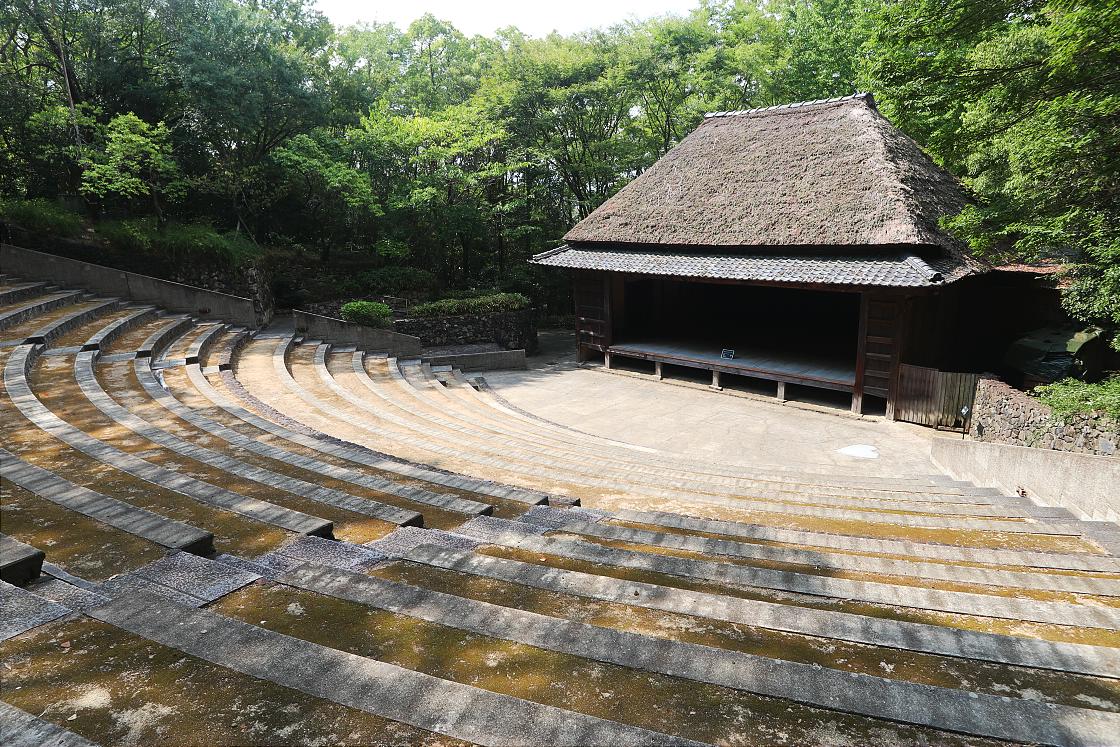
Set in the upper part of the park, one building stands out from the others with a striking minimalist design and heavy use of smooth concrete. Created by the renowned architect Ando Tadao in 2002, the Shikokumura Gallery was built to house the art collection of the park's founder, including European paintings, Persian ceramics and Buddhist statues.
Over the last decade, the gallery has begun a program of exhibitions by visiting artists, including many from Kagawa Prefecture and the wider Shikoku region.
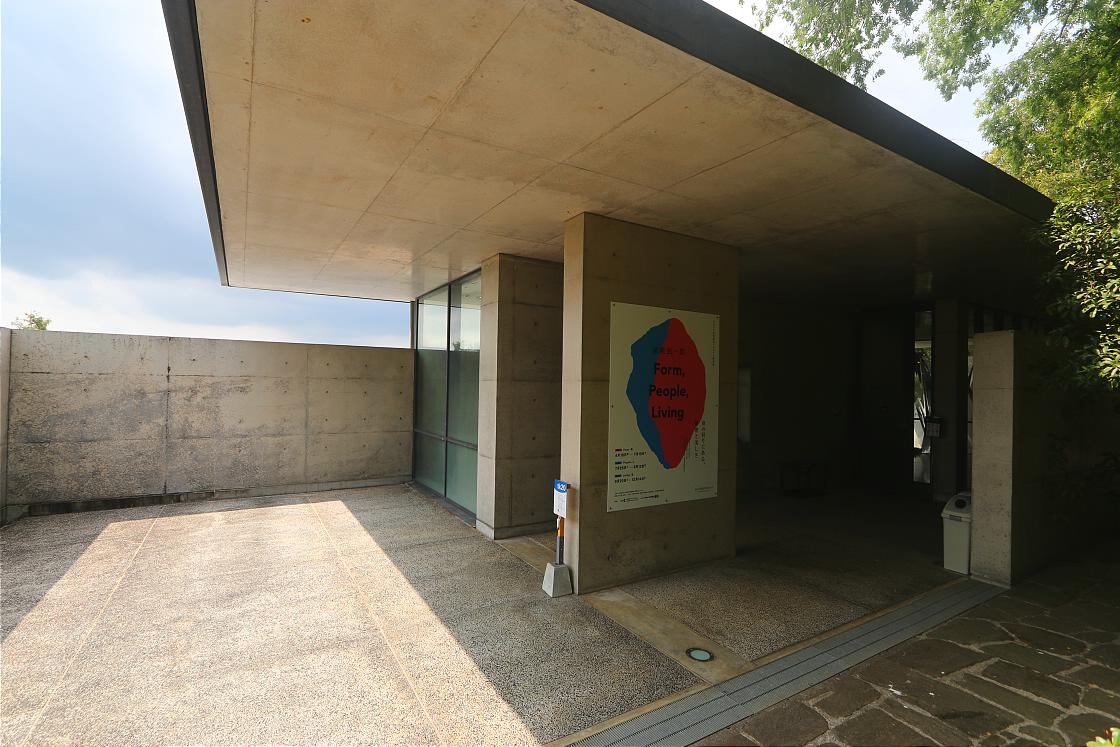
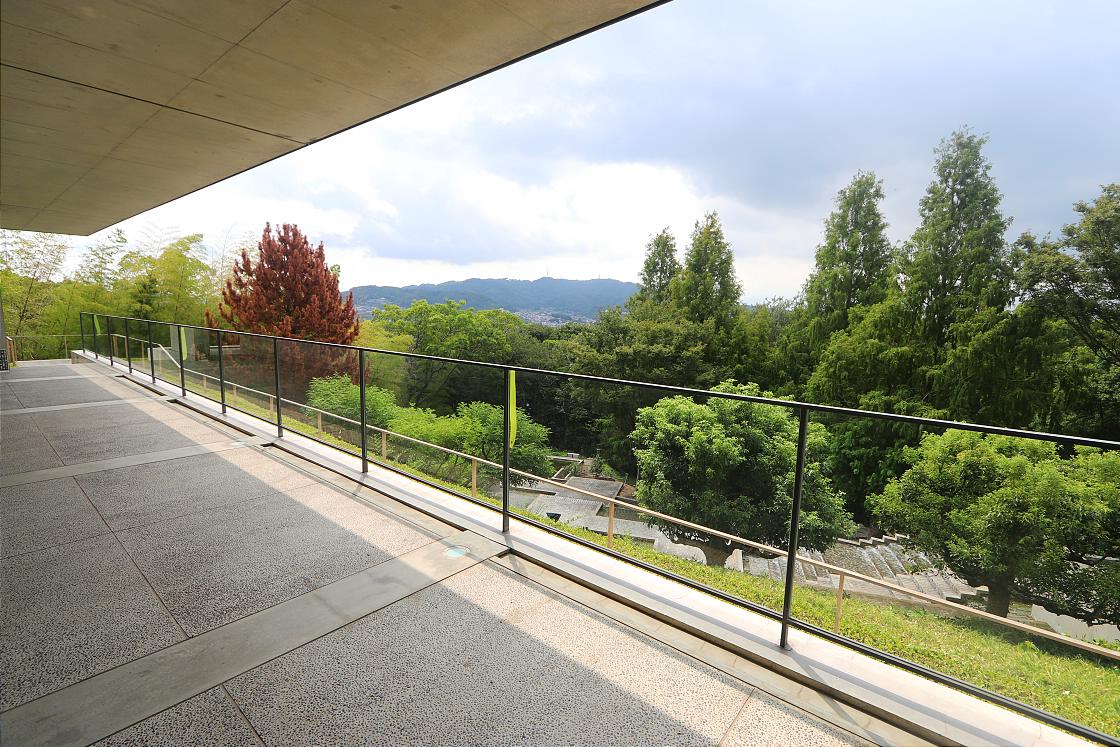
Before leaving the park behind, I made a final stop at Waraya - a traditional udon restaurant set in a historic thatched-roof farmhouse brought over from neighboring Tokushima Prefecture. Udon noodles from Takamatsu - often called Sanuki udon from the prefecture's former name - are known for their "al dente" texture and hint of elasticity.
Settling down at one of the tables, I ordered mine in the local kamaage style - served with a separate bowl of soy-flavored sauce, into which the noodles are dipped straight out of hot water and eaten - a light and very simple way to eat, emphasizing the fresh taste and chewy mouthfeel.
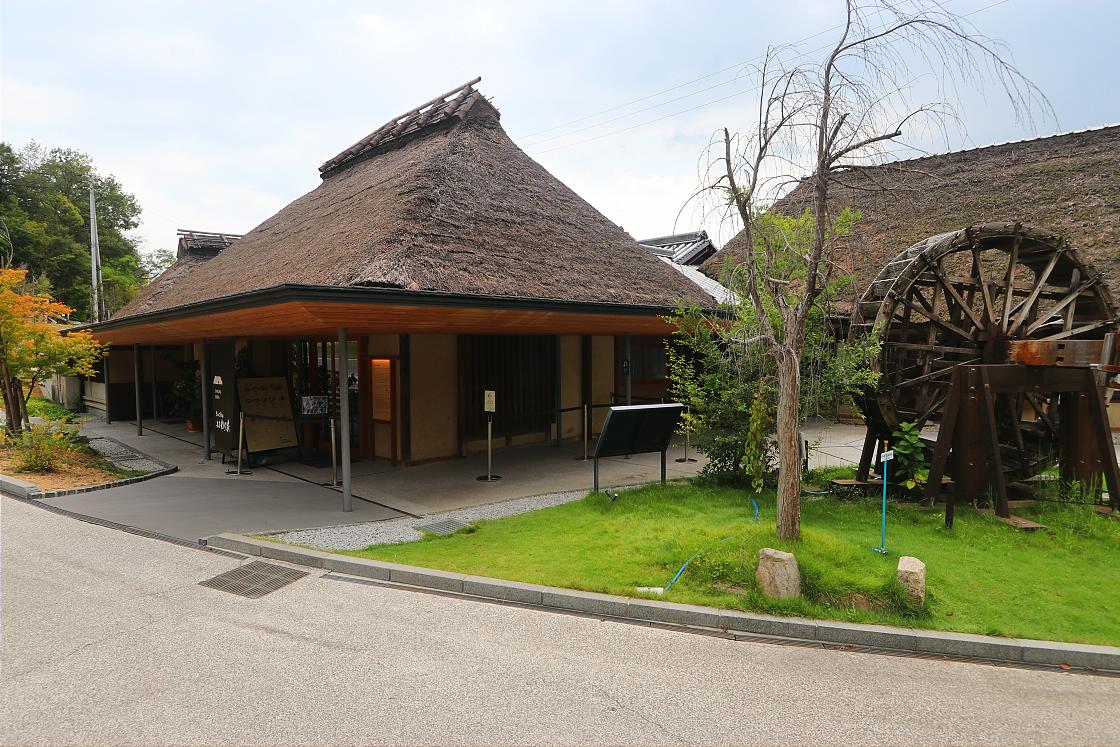
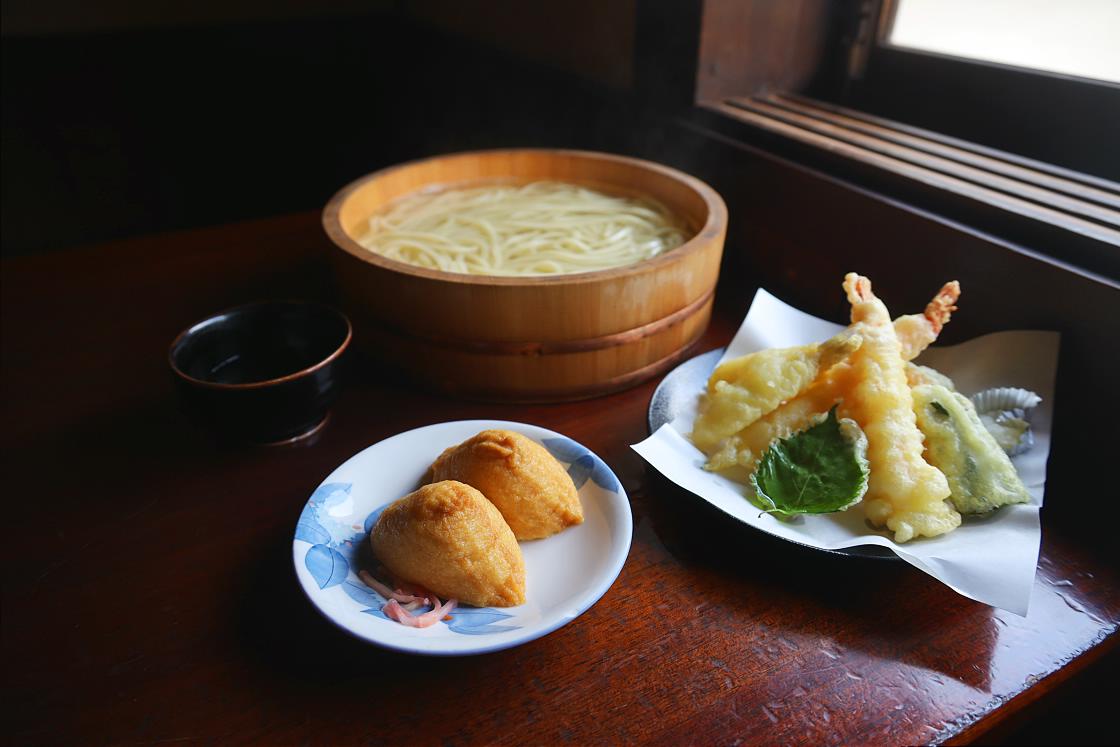

Feeling full and refreshed, it was time to retrace my steps to Takamatsu Station and from there continue my journey onwards to Fukuoka, a journey of just under three hours with one easy change from rapid to shinkansen at Okayama.
Located on the Hakata Bay close to Kyushu's northern tip, Fukuoka is the product of an 1889 merger between two smaller settlements - the former castle town of the same name, and the port town of Hakata - the latter name finding continuity both as the city's main station and one of its central business districts.
Having long served as a trade hub on the doorstep of Korea and China, Fukuoka has grown into a rich city steeped in merchant culture, combining strong local traditions with a friendly, cosmopolitan outlook. Today, it's the biggest city in Kyushu and the fastest-growing in all of Japan - a vital regional hub known for its relaxed atmosphere and easy livability, attracting a younger population that stands out against Japan's aging society.
Located just a few minutes' drive from Hakata Station in Fukuoka's central Gion district, my first stop in the city was at SABOE HAKATA, a chic new store offering a modern take on blended teas and traditional sweets. In addition to browsing their collection of house teas and a stylish line of implements, visitors can experience one of two tasting courses - one long, one short - in a compact but beautifully furnished upstairs tearoom.
Leaning heavily into the tea ceremony's sense of formalism and mystery but with a much more casual feel, the tasting began with a ritualistic smelling of various tealeaves, followed by a series of sips and light bites intended to bring out the natural beauty of the drink in many different variations.
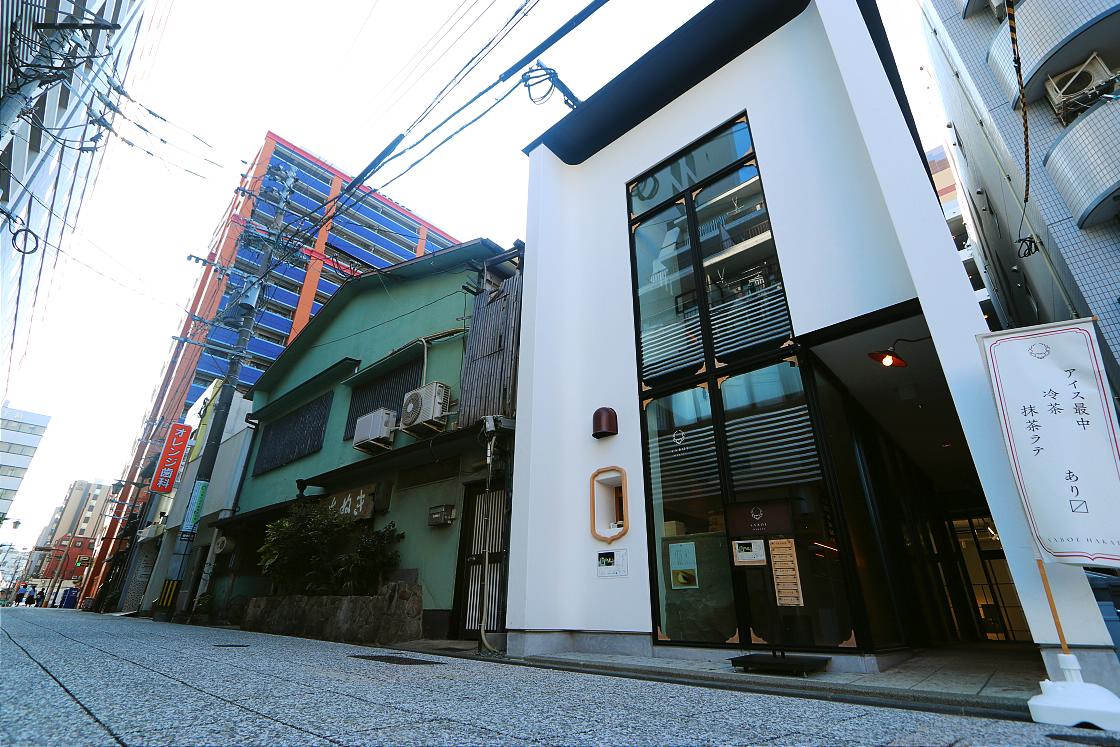
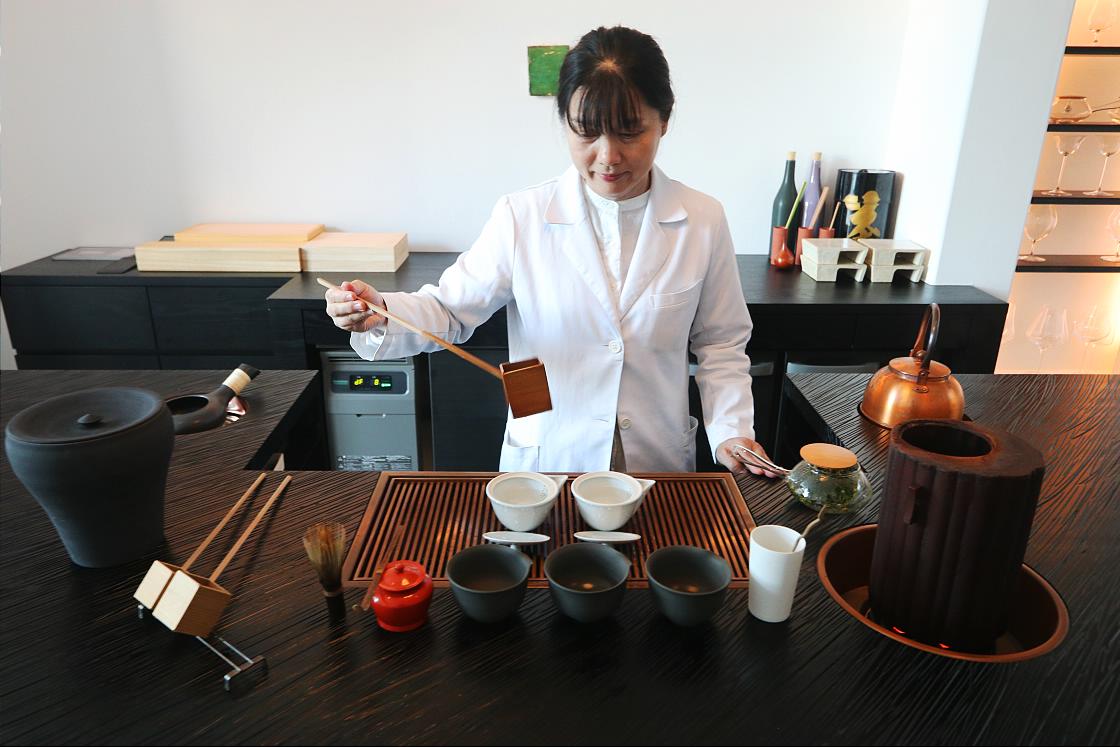
While the drinks included various delicious teas and even a refreshing non-alcoholic cocktail made with elderflower and based on Yame sencha, the star of the show for me may have been the selection of perfectly formed confectionery supplied by the popular Tokyo-based brand HIGASHIYA.
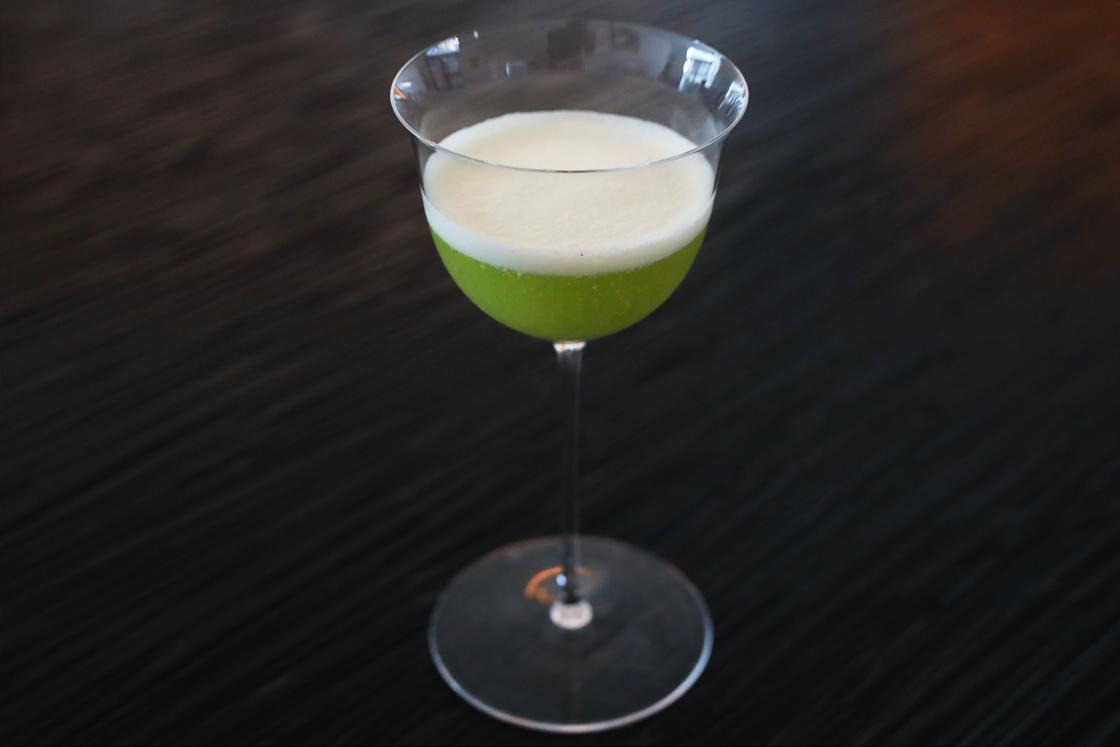
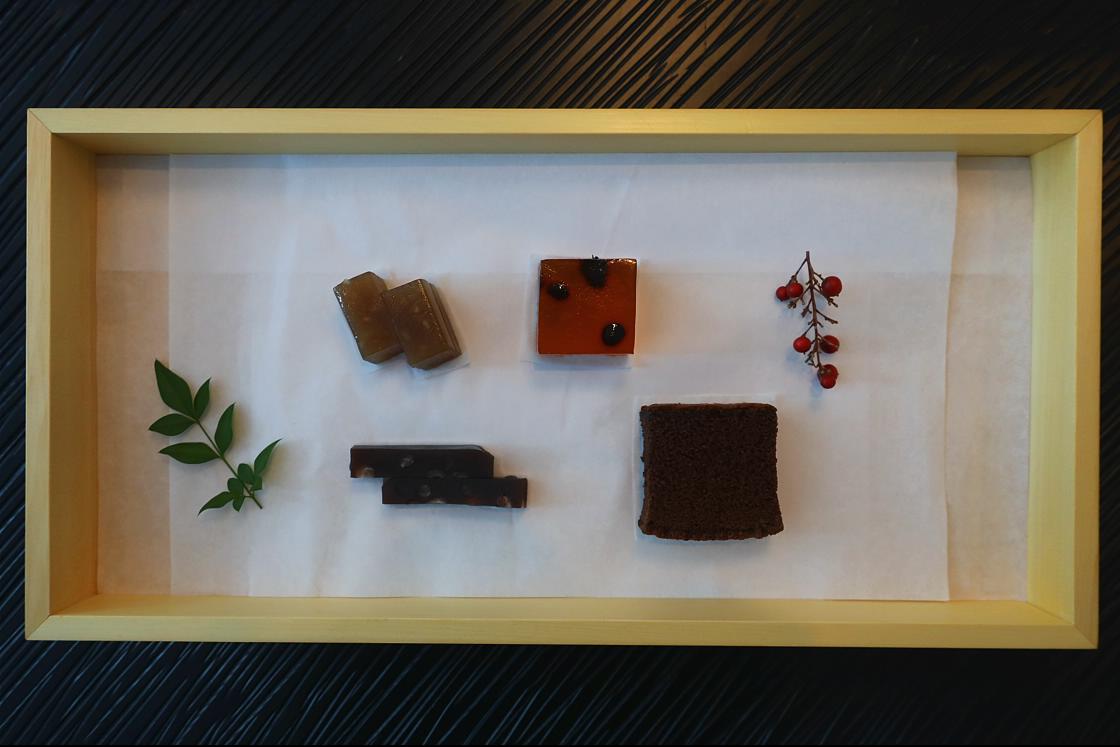
After that light but very satisfying experience, it was time for me to make my way to my accommodation for the evening. Overlooking Hakata Bay from its perch on the top two floors of the ONE FUKUOKA BLDG in the city's main Tenjin District, the ONE FUKUOKA HOTEL combines breathtaking city views with all the features one would expect from a modern five star hotel.
Stepping into the stylish lobby area, I immediately felt well looked after with a check-in process that was as light and seamless as it was attentive. With that taken care of, I headed down to the guest floor - an oasis of quiet and seclusion that soon absorbed me completely into its peaceful atmosphere.
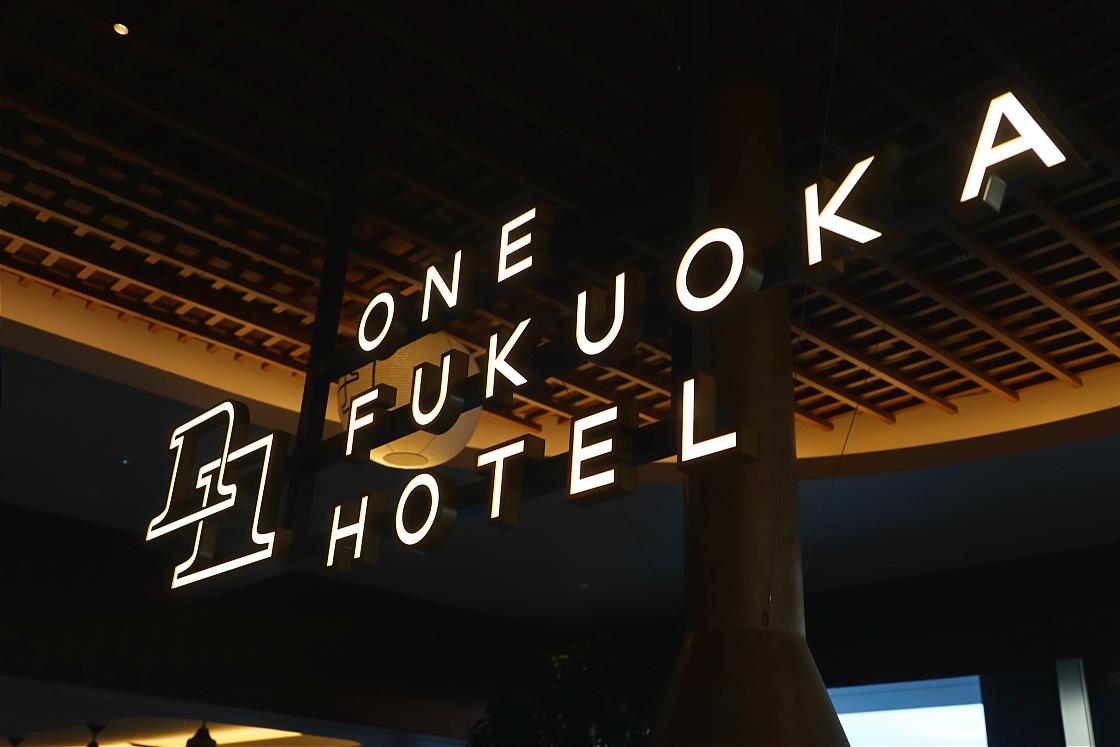
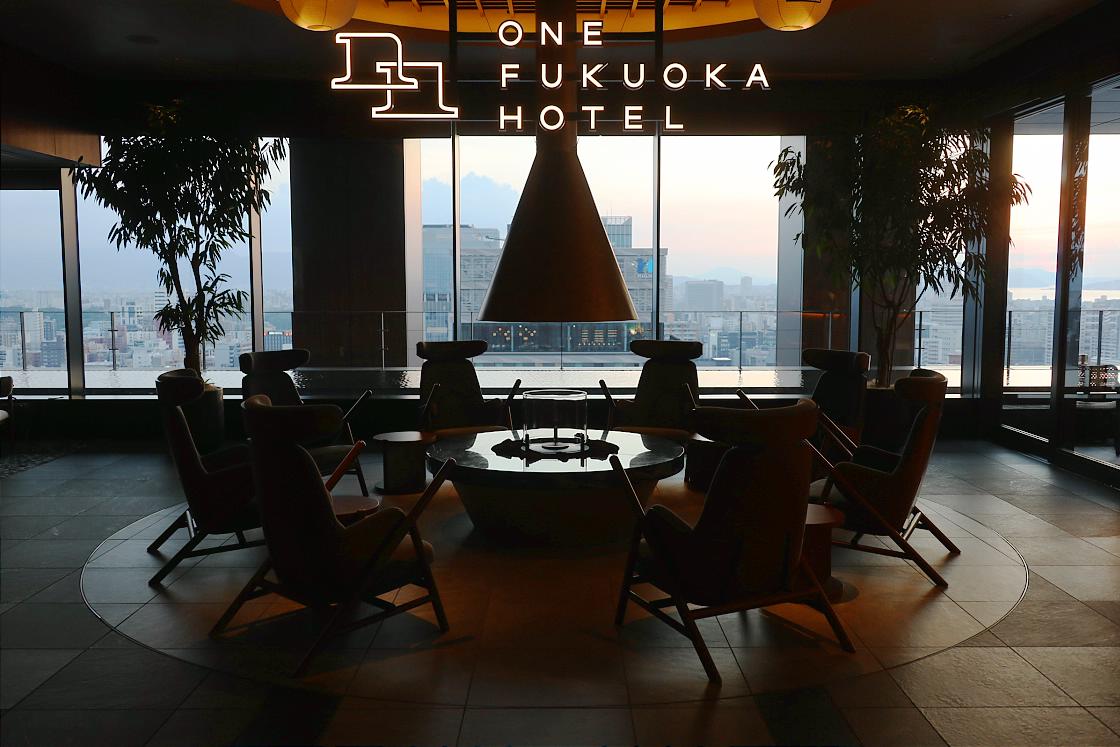
Breaking away from the usual maze of featureless corridors, here most of the guestrooms were arranged in a single row next to an open, leafy courtyard with soft, paper lamps and comfy chairs. Over to one end I found the library lounge - a wonderfully cozy spot that felt somewhere between a cafe, trendy bookshop and one's own private study.
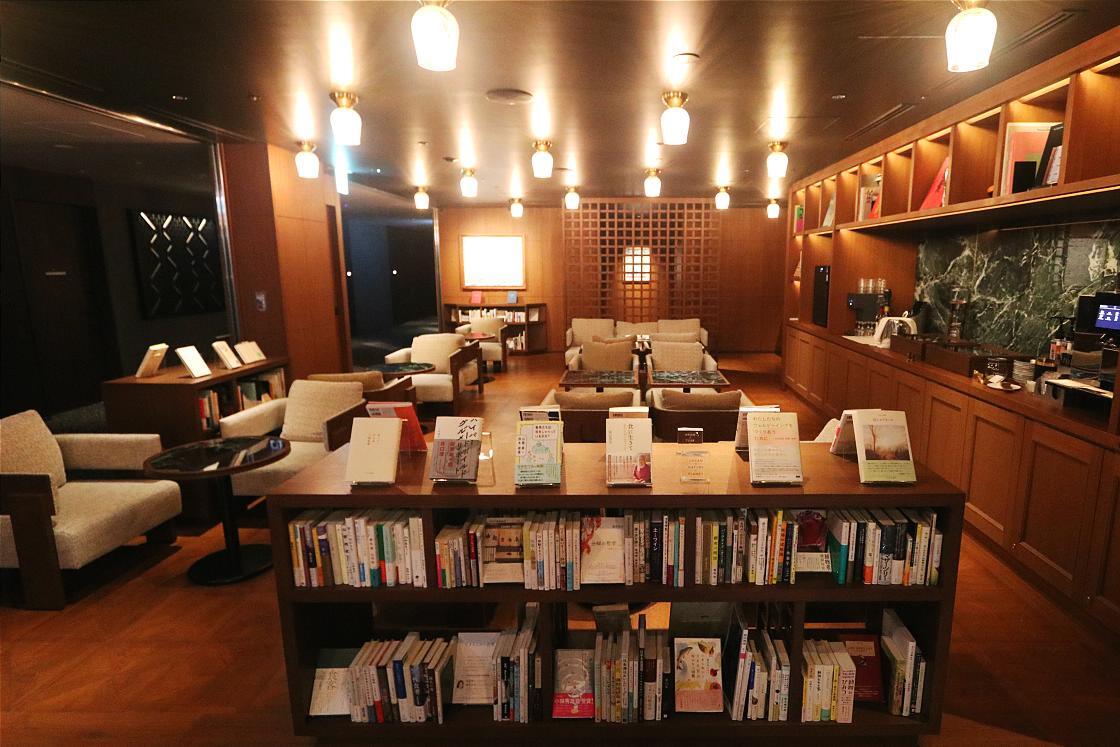
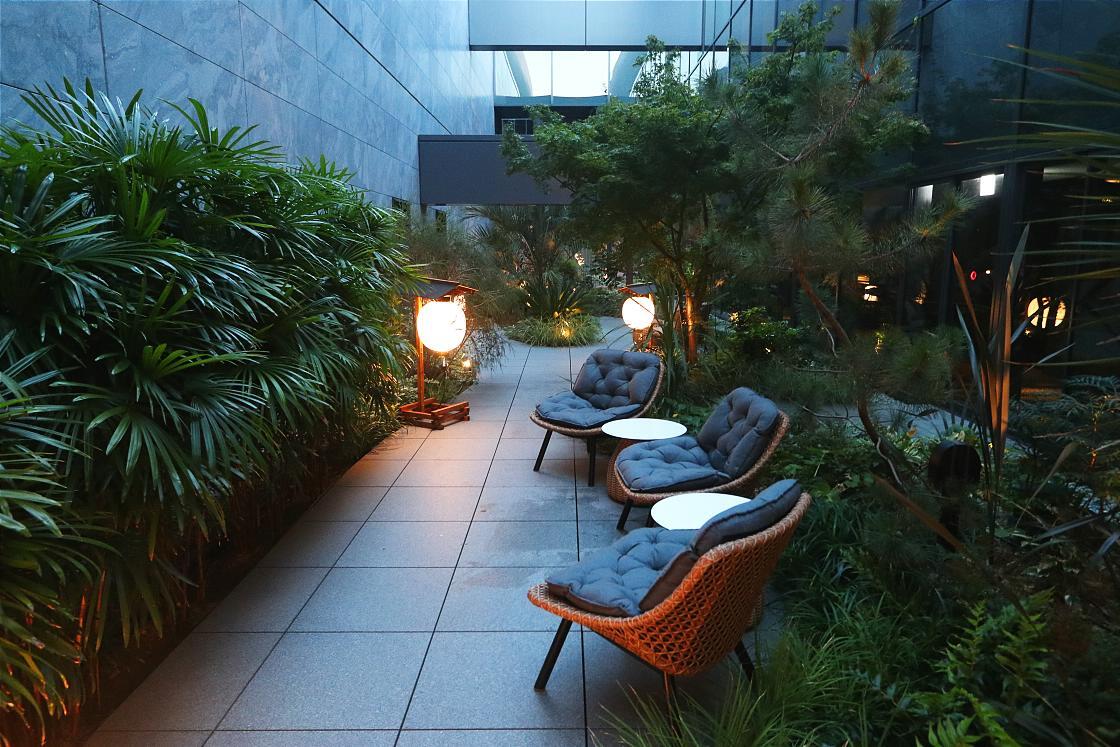
My own room type for the evening was the signature king - the next category up from the slightly smaller superior king, to which it adds a study desk and slightly improved view of the inner courtyard. While this already felt amply spacious and supremely comfortable, guests can choose between a total of eight room types, topping out at the much larger TENJIN CORNER TERRACE SUITE.
Another notable type is the ONE FUKUOKA SUITE, tucked away in a corner of the upper floor for even more spectacular views and equipped with a full-sized kitchen, making it perfect for longer stays.
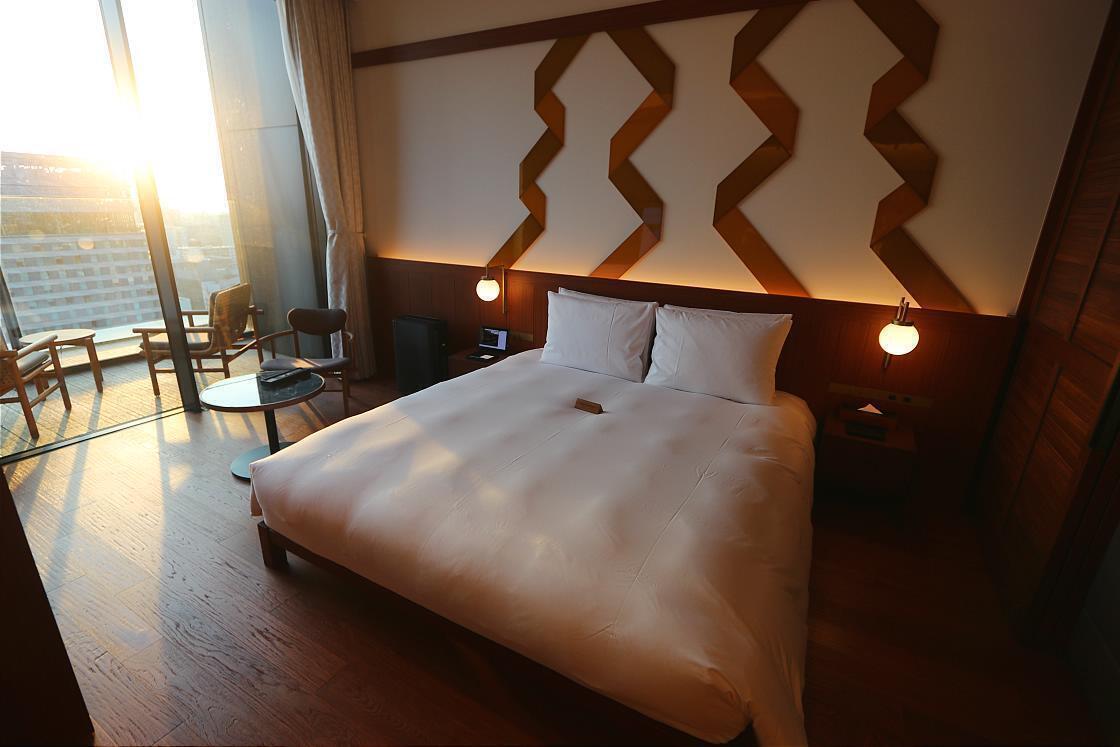
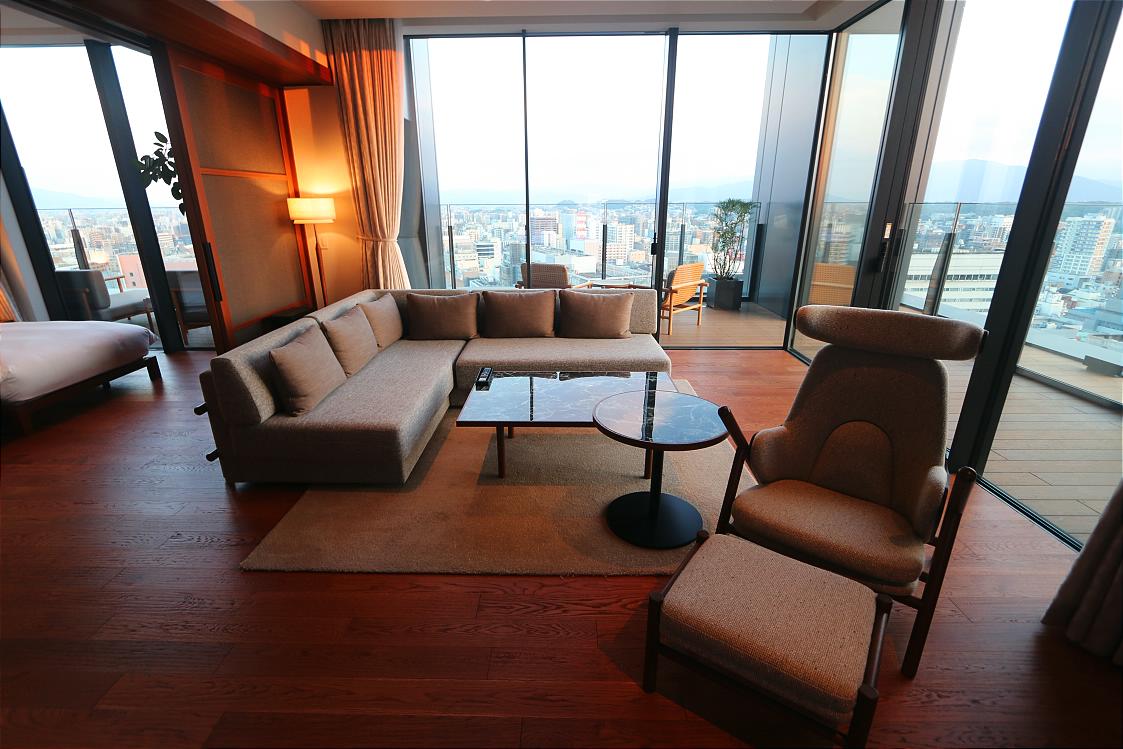
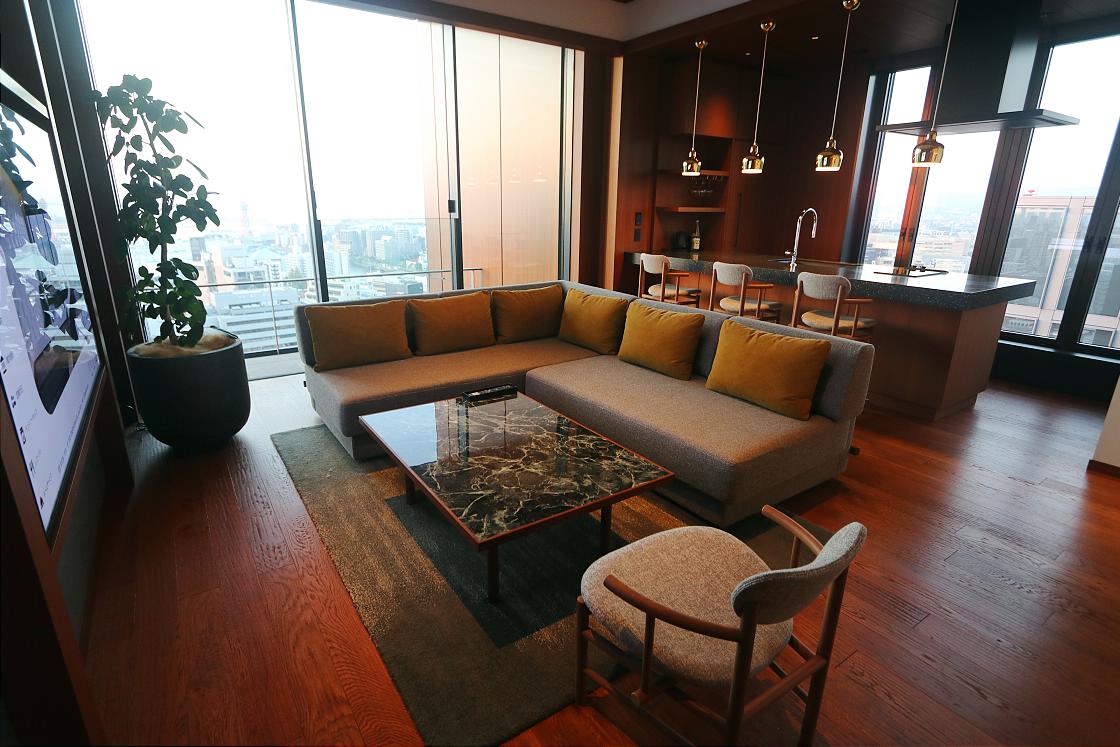
Having dropped off my bags and gotten settled into my room, it was soon time to venture out once again, this time to sample one of the staples of Fukuoka's nightlife - an izakaya-style dinner at one of the city's many yatai or food stalls.
Clustered along streets and riverbanks in a handful of locations throughout the city, these really are the perfect spots to while away a warm summer evening, washing down small plates with glass or two of draft beer while elbow-to-elbow with a rotating cast of fellow diners.
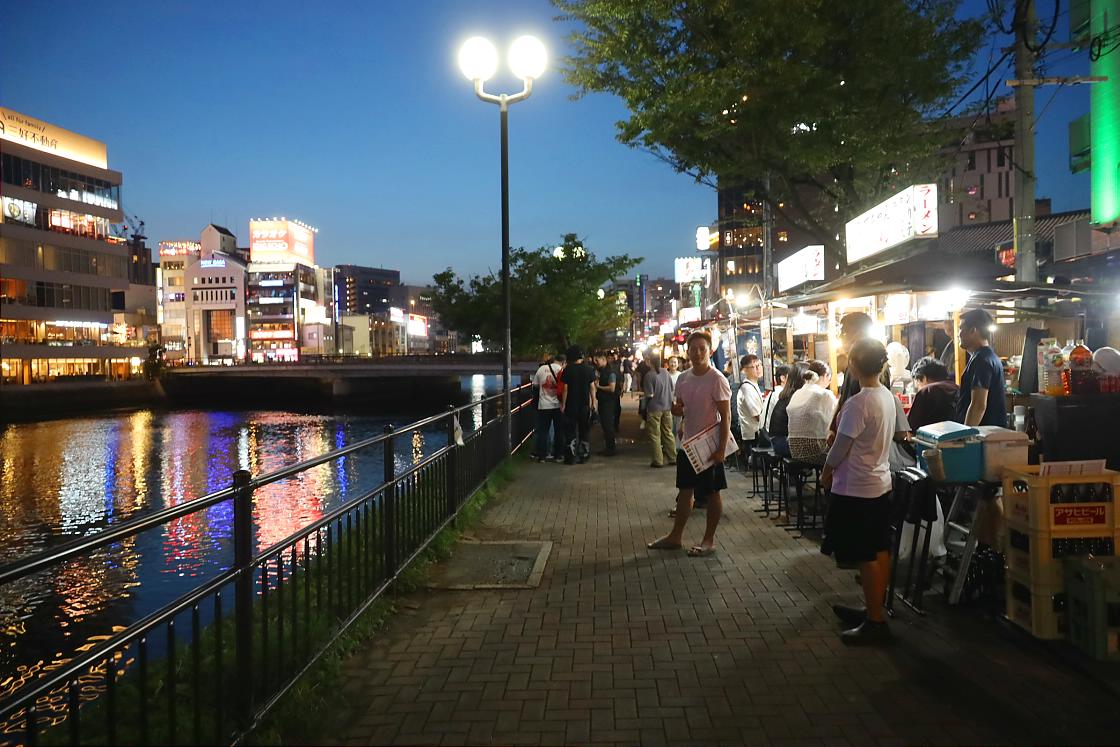
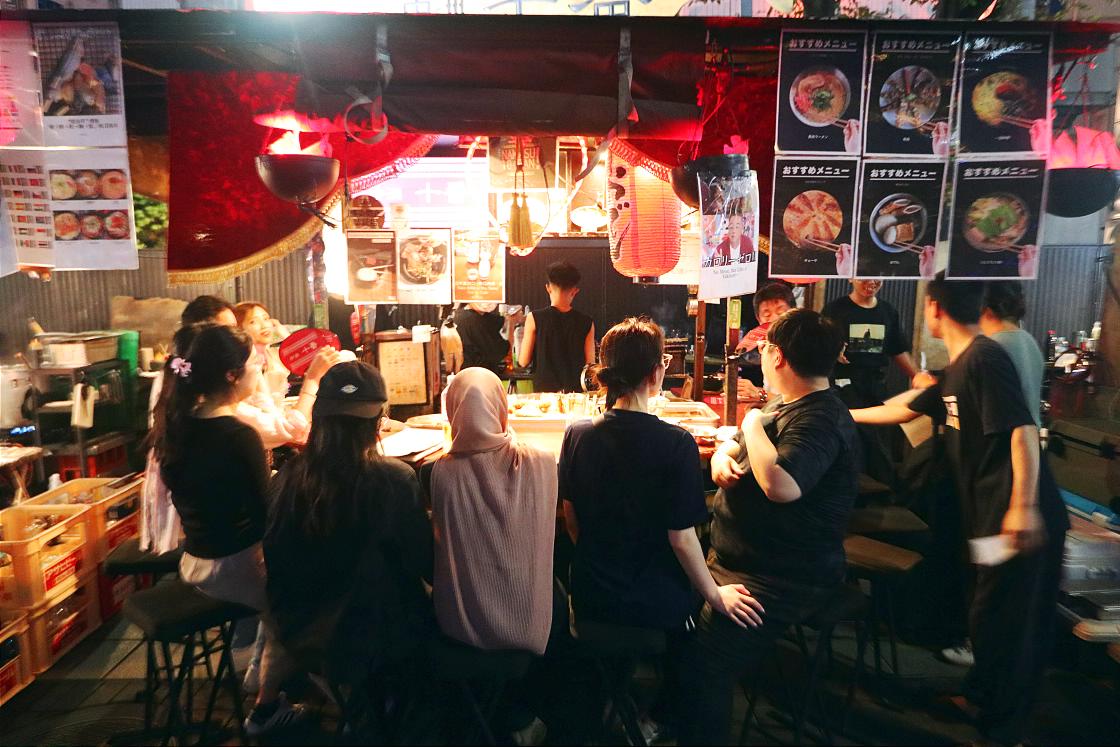
My choice for the evening was the Hakata Yatai Nakasu Juban, a lively row of stalls in a pleasant spot by the Nakagawa River.
This turned out to be ideal, and in no time at all I was digging happily into popular local dishes like chicken skin yakitori, stewed gyu-suji or beef ligament, and my own personal favorite - bitesized crispy gyoza dumplings.
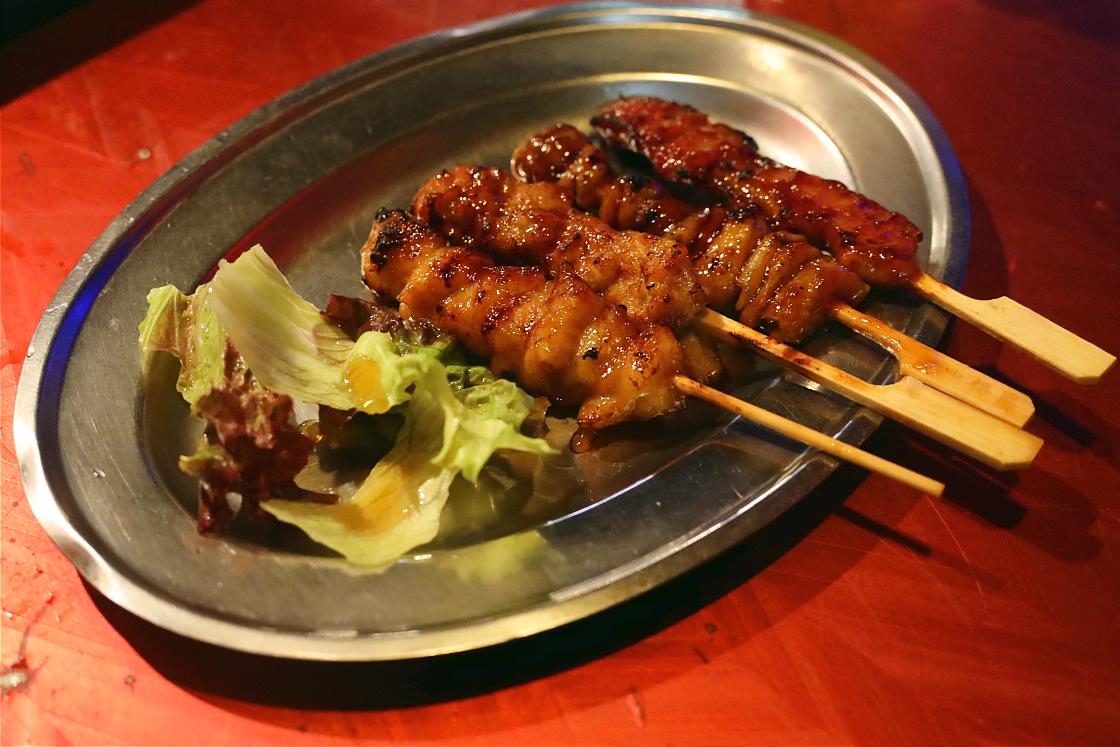
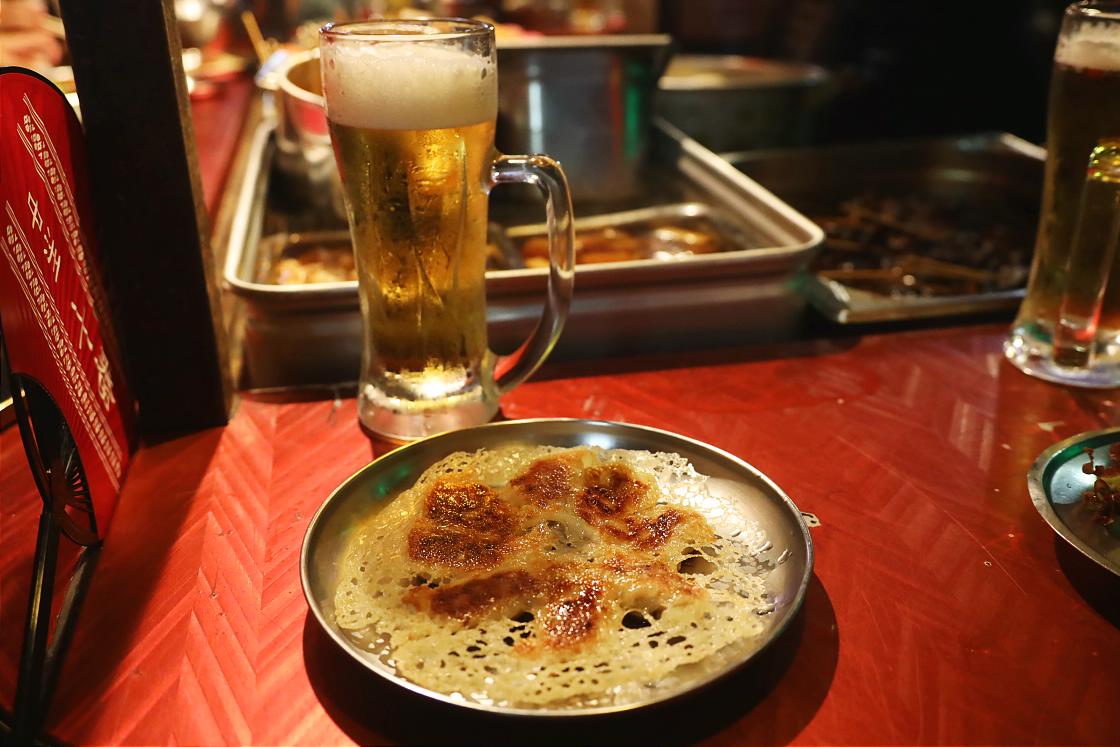
Day 3
Somehow tearing myself away from my amazing hotel room, I kicked off the final day of my trip with a hearty breakfast in the top-floor dining area, brightened by a spectacular view out over the port district. In addition to the usual buffet-style staples, guests can choose from a list of "mains" ranging from traditional Japanese dishes to steak for the committed all-day carnivore.
Generally more conservative in the early morning, I opted for the french toast which turned out to be delicious - a silky slice of caramelised toast topped with whipped cream and sliced banana, surely as perfect a way as there is to start the day.
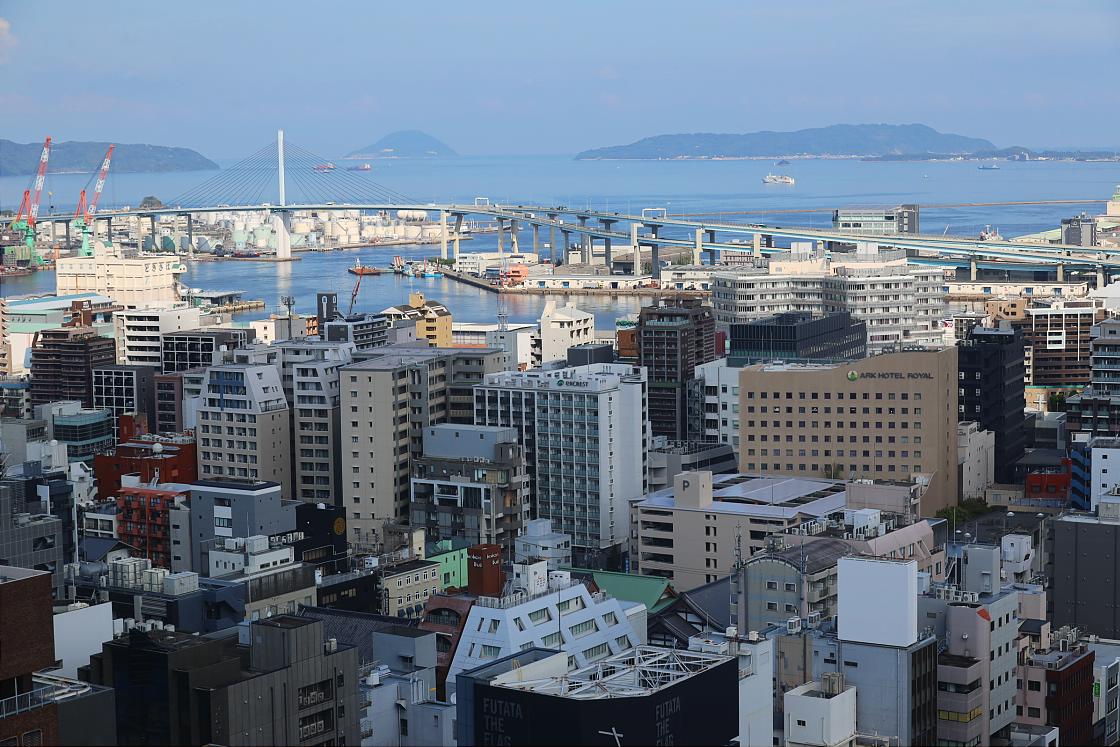
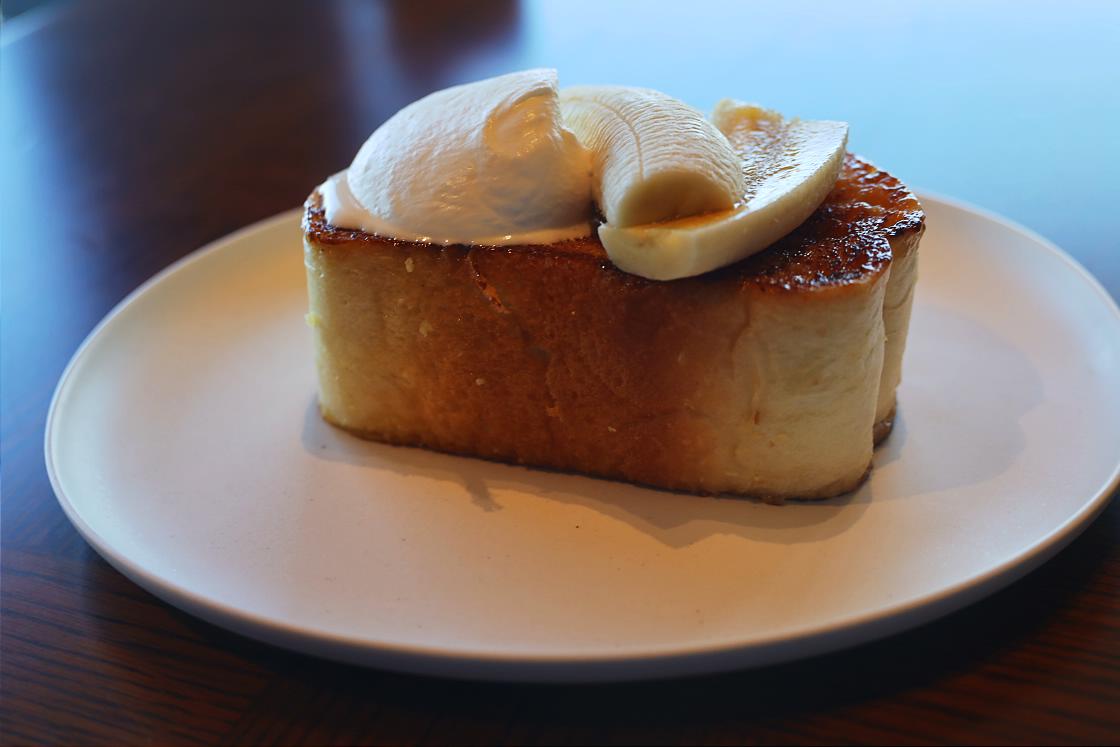
After checking out and saying my thanks to the staff, I was soon in a taxi bound for Hakata Old Town, a historic part of the city dotted with temples, shrines and old shops, giving it an atmosphere reminiscent of parts of Kyoto. My starting point here was the striking Sennennomon or "thousand year gate", erected in 2014 to mark the entrance to nearby Jotenji Temple and, at least informally, the district as a whole.
For all its modest size, I was deeply impressed by the care that must have gone into this structure - formed in part from an ancient camphor tree donated by the Dazaifu Tenmangu Shrine and covered with subtle details linking with local heritage, from patterned strips representing unique weaving techniques to carved designs including rainbows, spirals and demon heads.
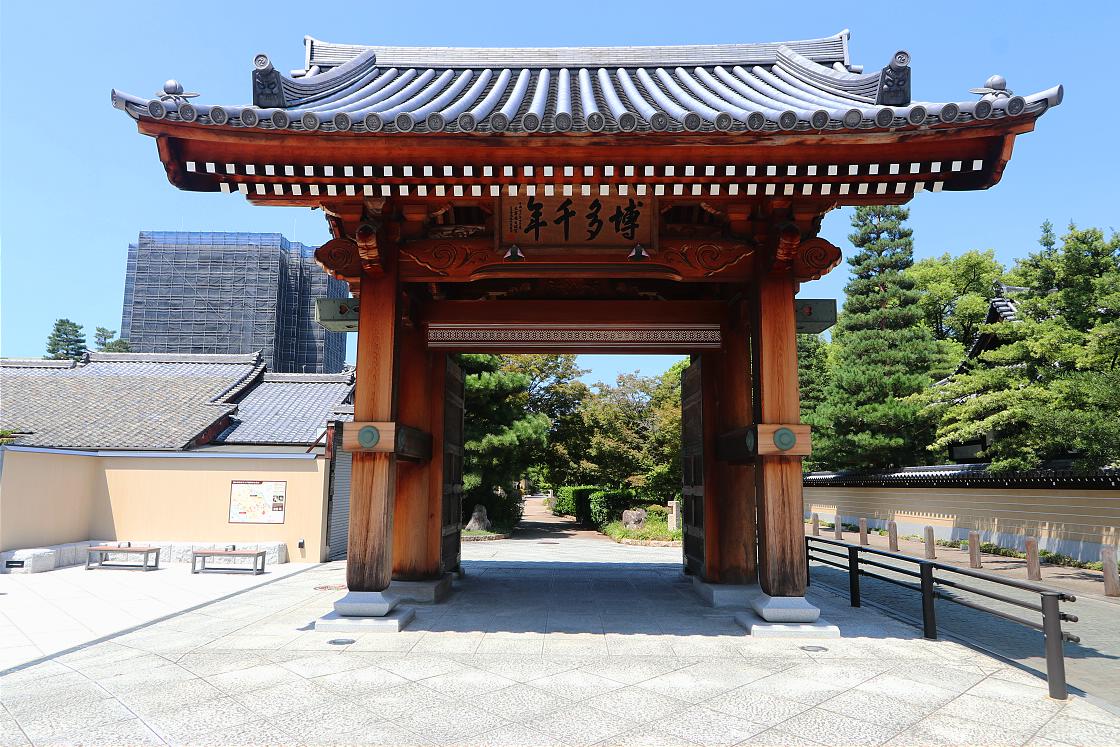
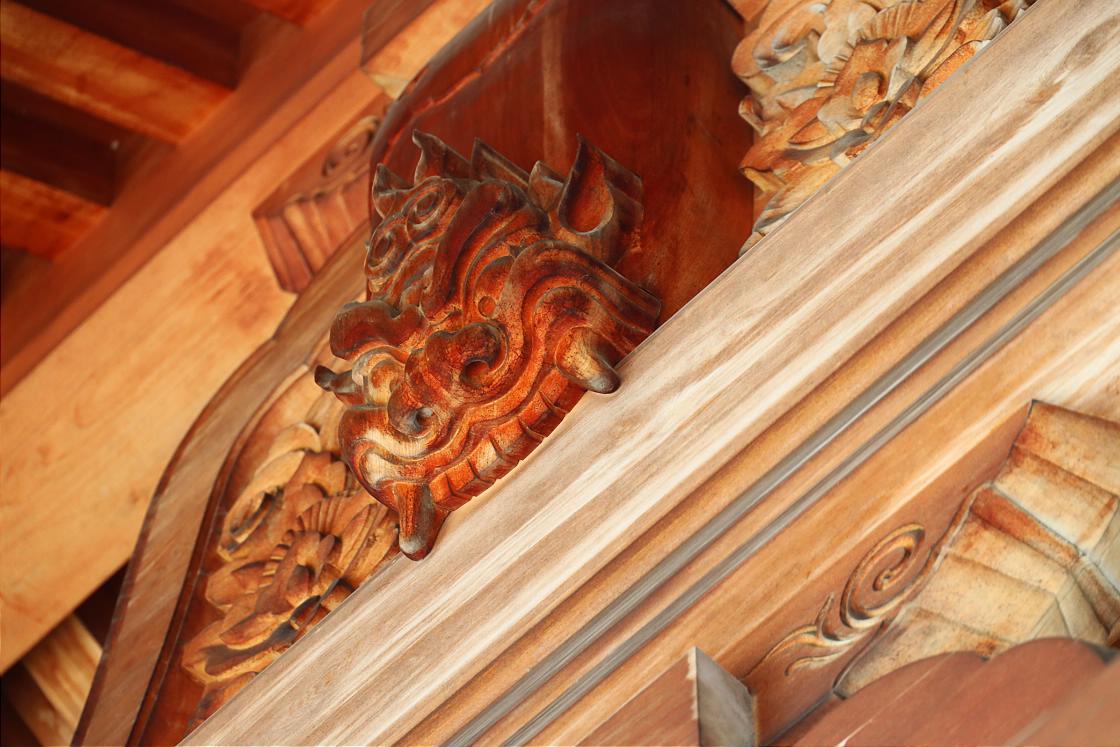
Continuing for about 10 minutes on foot to the southeast, I stopped in at Kushida Shrine - an ancient site that is at once a spiritual hub for Fukuoka's residents, a protector of what was once Hakata City and the center of its largest festival, the Hakata Gion Yamakasa held every year from July 1-15.
Originally founded in 757, the shrine is dedicated to three of Shinto's most important figures: Amaterasu, the supreme deity; the storm god Susano, who wards off misfortune; and Okuninushi, the deity of nation-building. The main building is ornately carved and dates to 1587, built on the orders of the warlord Toyotomi Hideyoshi as part of his efforts to restore Hakata following widespread destruction in the war for Kyushu.
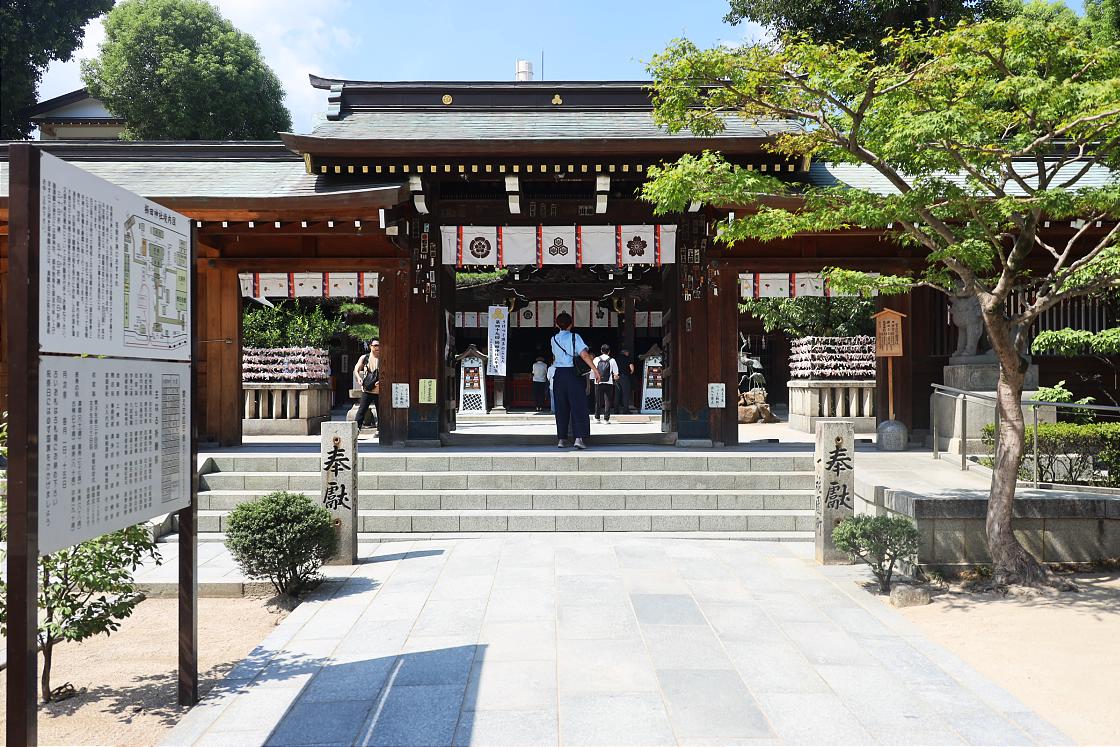
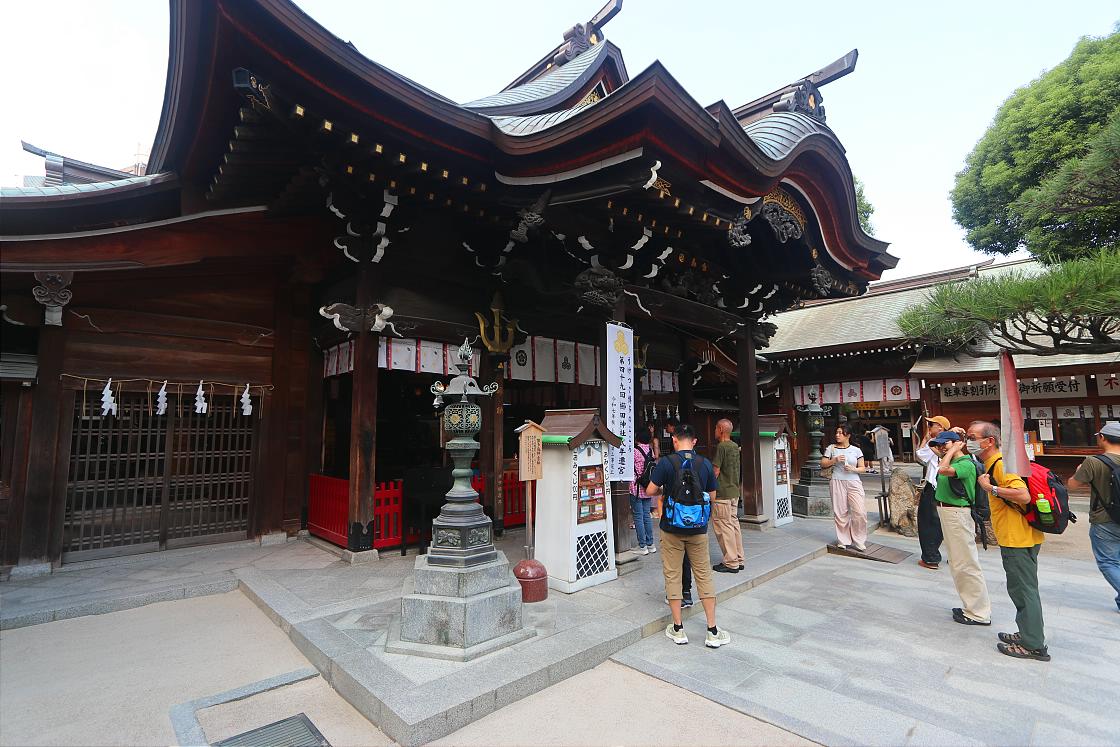
Before saying goodbye to Old Town, I made a final brief stop for lunch at Kappo Yoshida Hakata Tenyamachiten, the second branch of a longstanding restaurant in the nearby Tenyamachi neighborhood. Here, the speciality is taicha or red sea bream served in a rich sesame dressing - a mix of refinement and simple practicality that fits perfectly into the area's merchant-influenced culture.
The meal itself is a kind of local ritual - first, one enjoys dressed sashimi slices of the sea bream simply, over rice. Once almost full, one pours a little tea into what remains to form a silky porridge-like mixture called ochazuke. Even as someone who hasn't always enjoyed it in the past, I had to admit that the sesame sauce made all the difference - perfectly matching the delicate sea bream while adding a deep umami-richness.
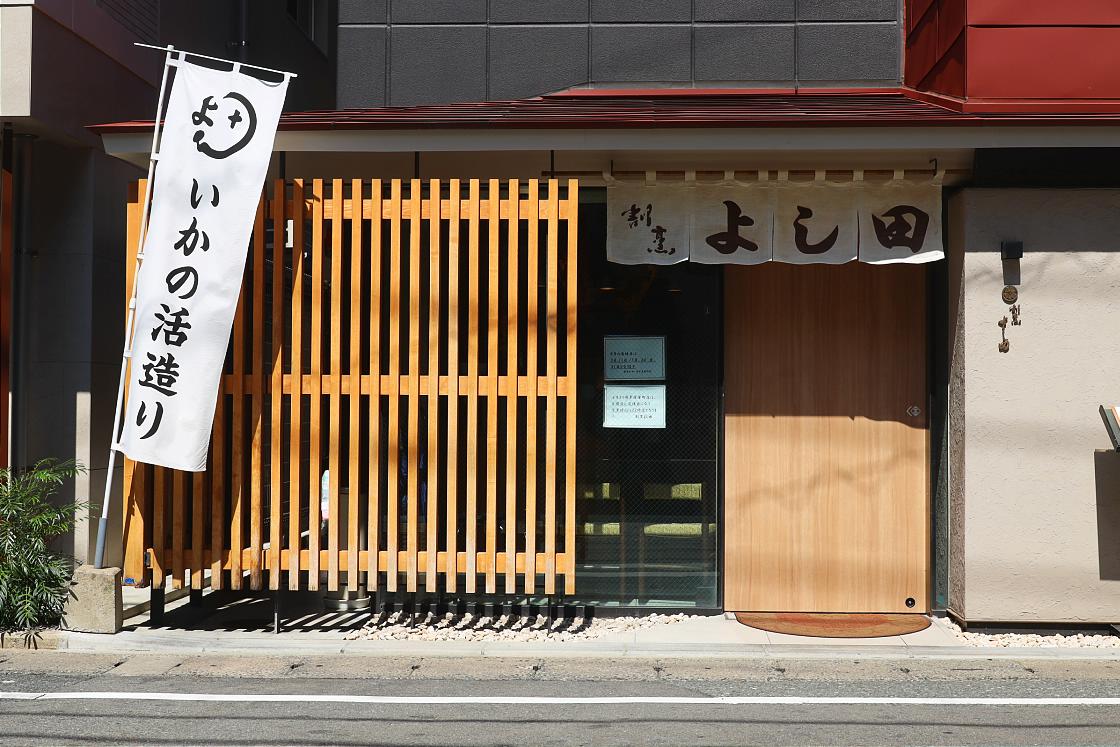
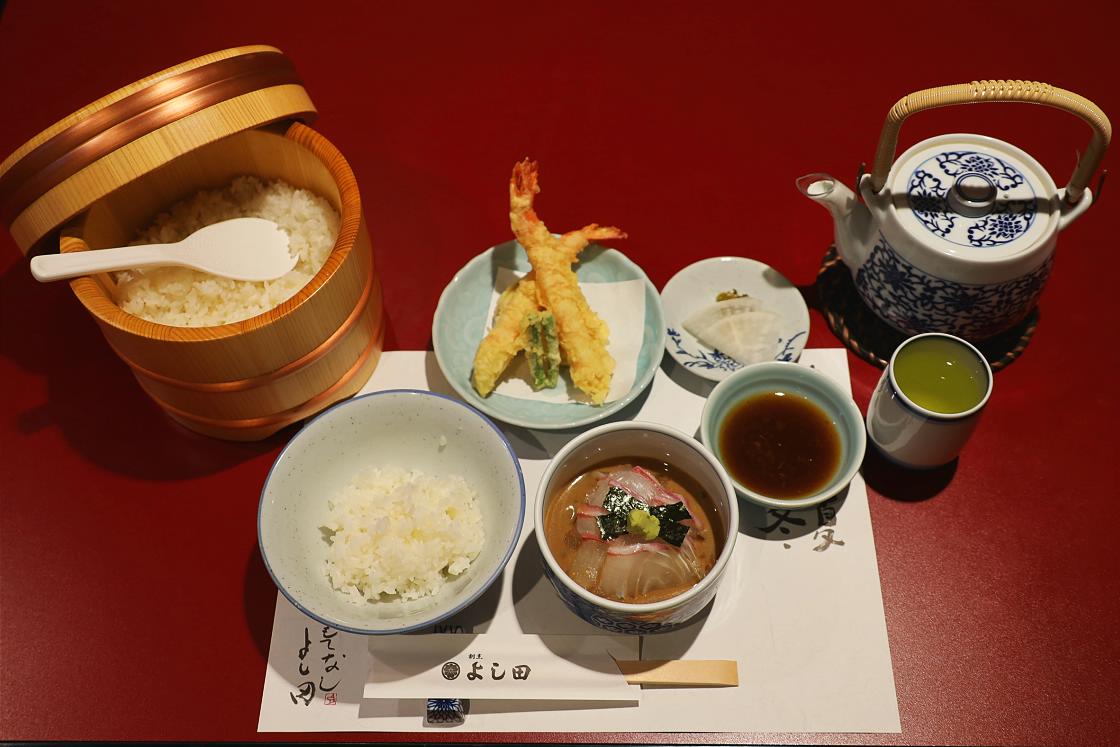
For my final visit in Fukuoka, I took a 15 minute taxi ride out of the city center and into the leafy, upscale residential neighborhood of Sakurazaka. Here, tucked away amid rows of more typical looking houses, I arrived outside a fascinating, brutalist-style building with a heavy concrete exterior softened only somewhat by a thickly textured plaster finish. Created by veteran architect Kamiya Shuhei, Kaigeido serves both as a residence and exhibition space for Nakamura Ningyo - a celebrated doll-making workshop first established in 1917.
Emerging in the 17th century, the tradition of Hakata Ningyo is firmly rooted in the city's mercantile culture, with the dolls themselves being displayed in homes to reflect local tastes, sold to travelers or presented as offerings at temples and shrines.
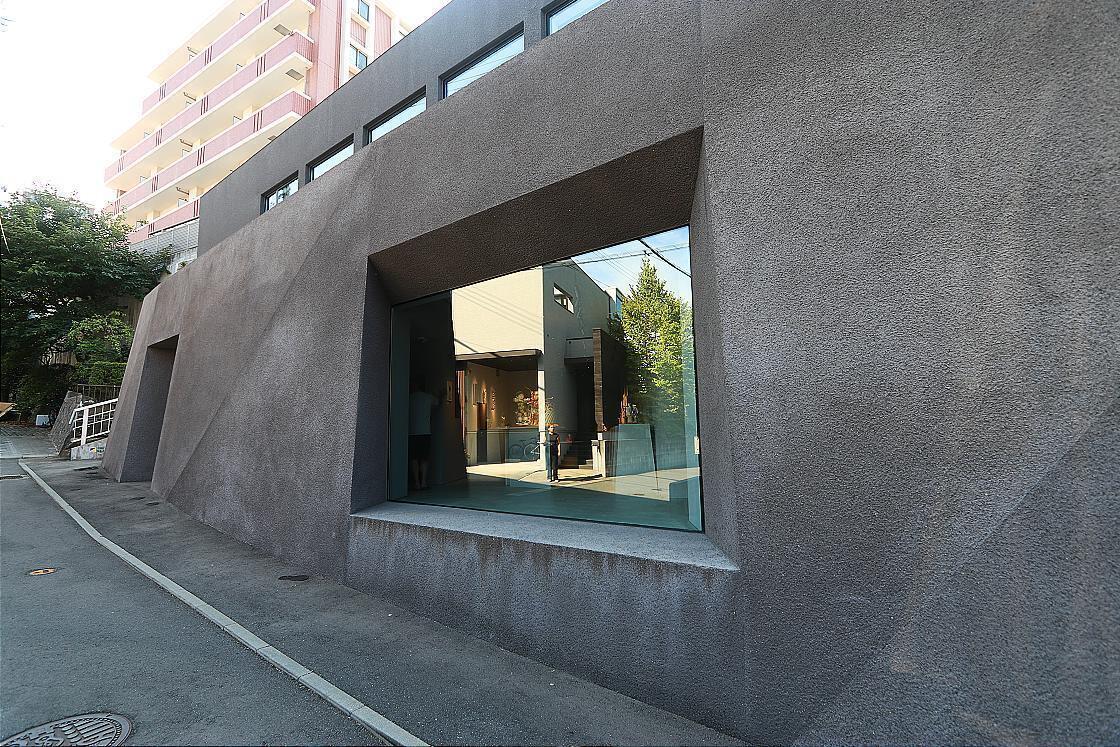
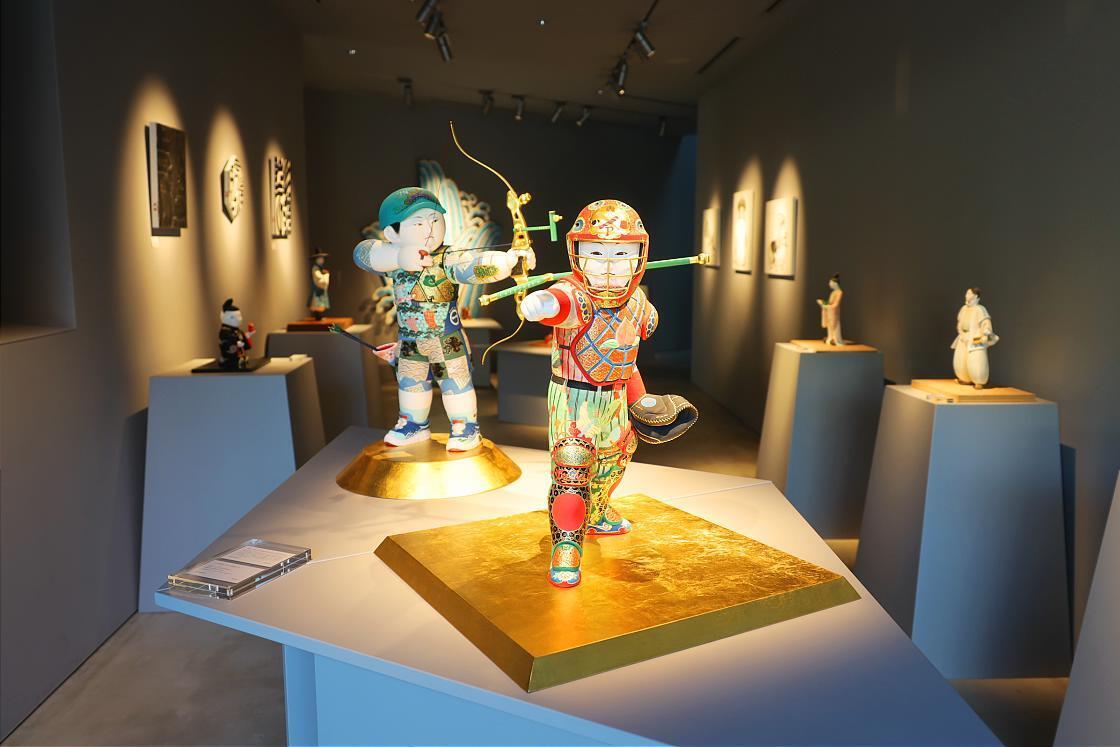
In contrast with the formalised and aristocratic style of kyo-ningyo or Kyoto dolls - typically made from lacquered wood and dressed in the ornate style of Heian Period nobility - Hakata dolls are more often made from unglazed ceramic and depict a range of subjects, from townspeople or children in local dress to mythical or religious figures.
A third-generation artist and the current family head, Nakamura Shinkyo works primarily with unglazed porcelain finished with mineral pigments, creating figures that are graceful, often serene and dazzlingly lifelike.
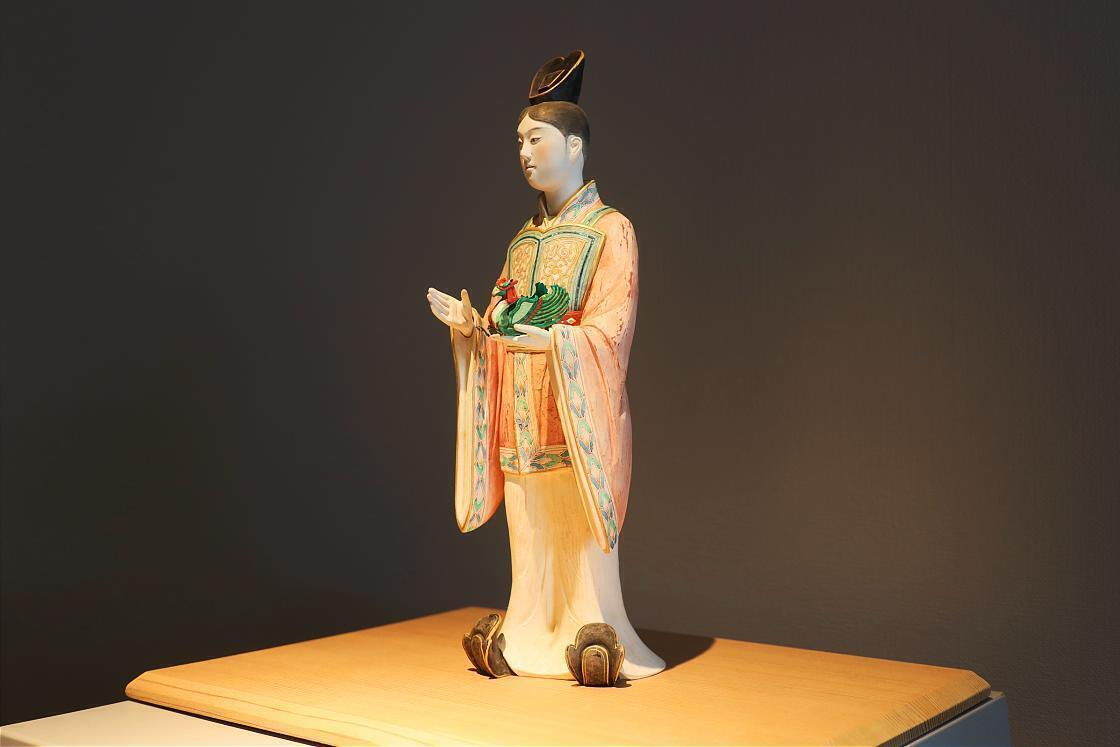
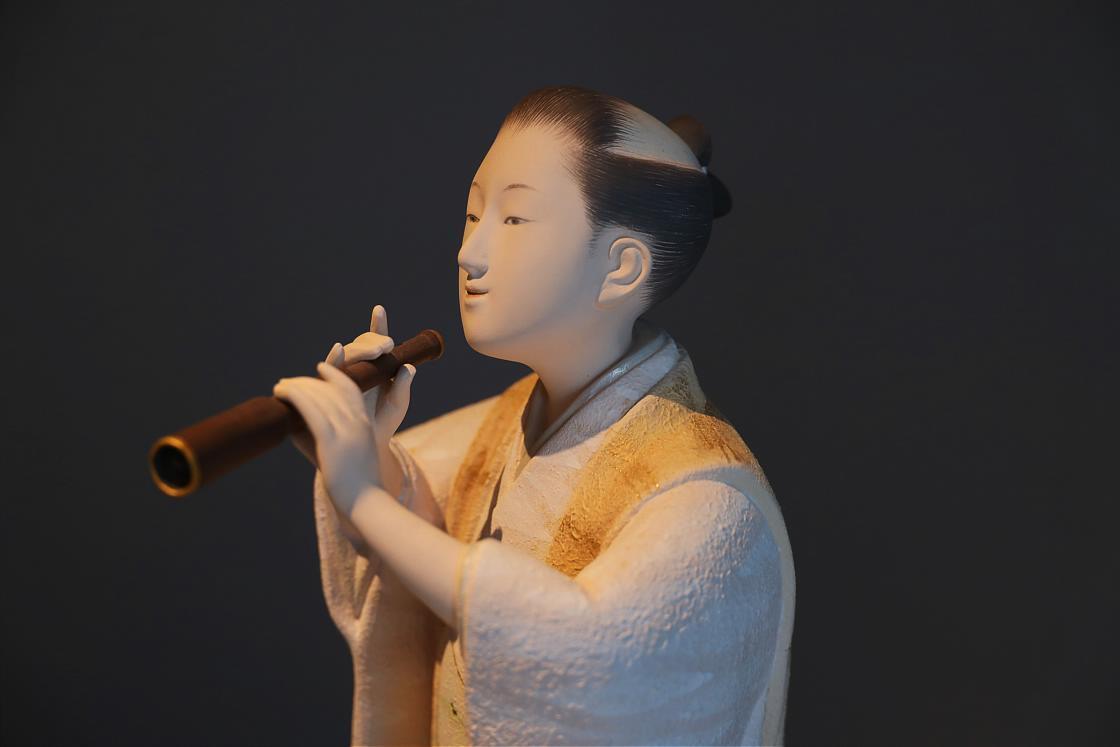
The family's fourth generation artist and future head, Nakamura Hiromine reveals a style that, though highly intricate, is more stylized and contemporary. Among his pieces on display, I especially liked his figures from Japanese and Chinese myth whose sweet, oversized features add to the feeling of playfulness and charm.
Despite his affinity for traditional subjects, the younger Nakamura doesn't shy away from depicting characters from pop culture, to judge from his limited edition 2023 work "Godzilla of Reminiscence".
Made in collaboration with Toho for the 70th anniversary of the city-levelling monster, the figure stands at 55cm tall and was crafted meticulously from over 40 separately molded parts, rendering every battlescar and twisted muscle and with lifelike clarity.
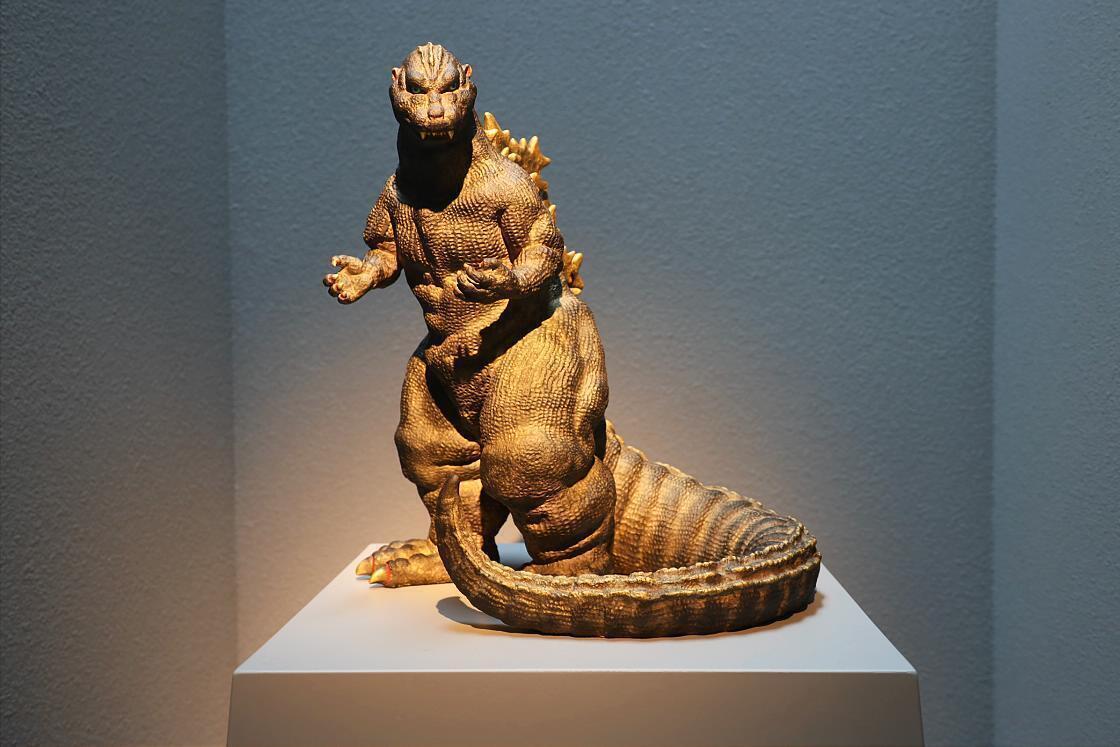
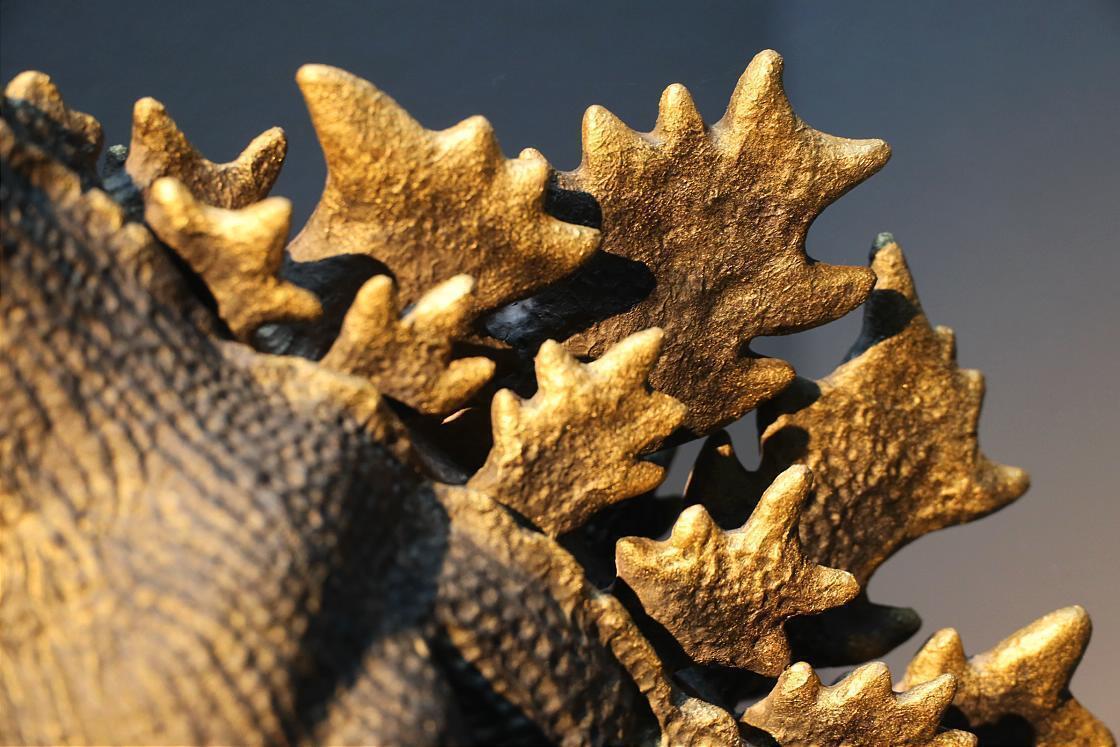
Equally striking were two larger pieces created for the annual festival of Children's Day. Part of a series depicting boys as athletes in modern sports, the figures are of an Olympic-style archer and a baseball catcher, complete with modern gear and covered in intricate designs.
